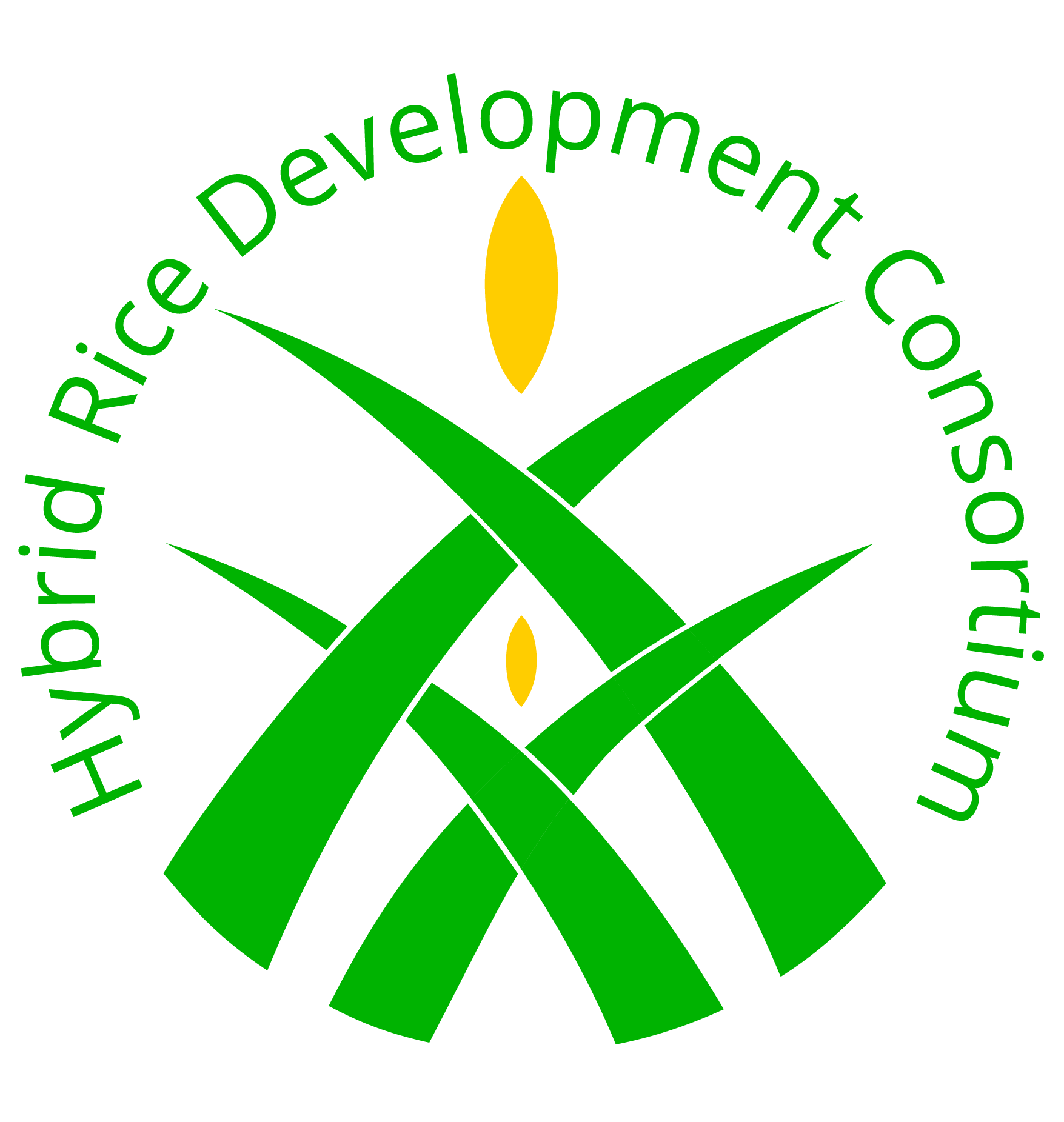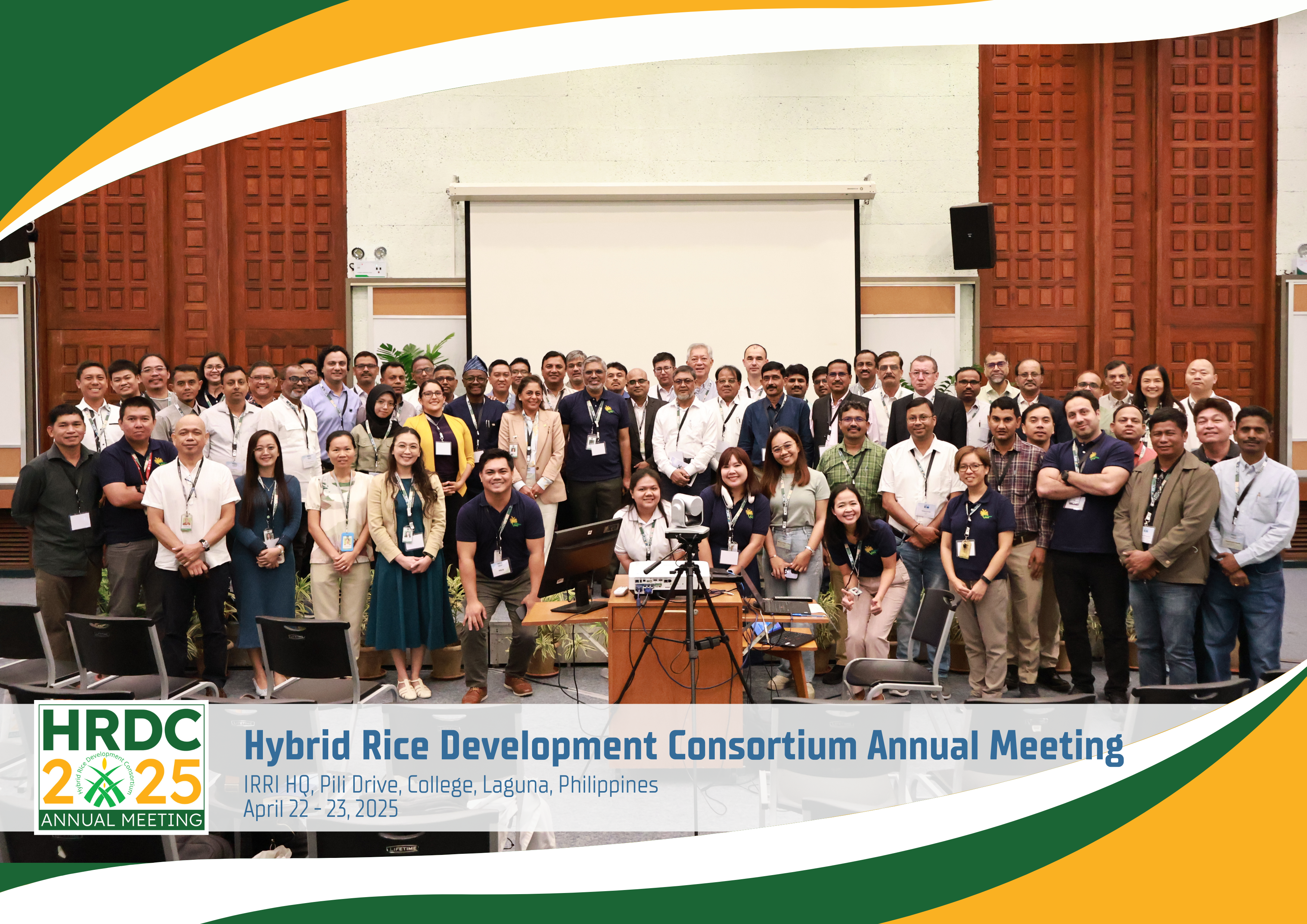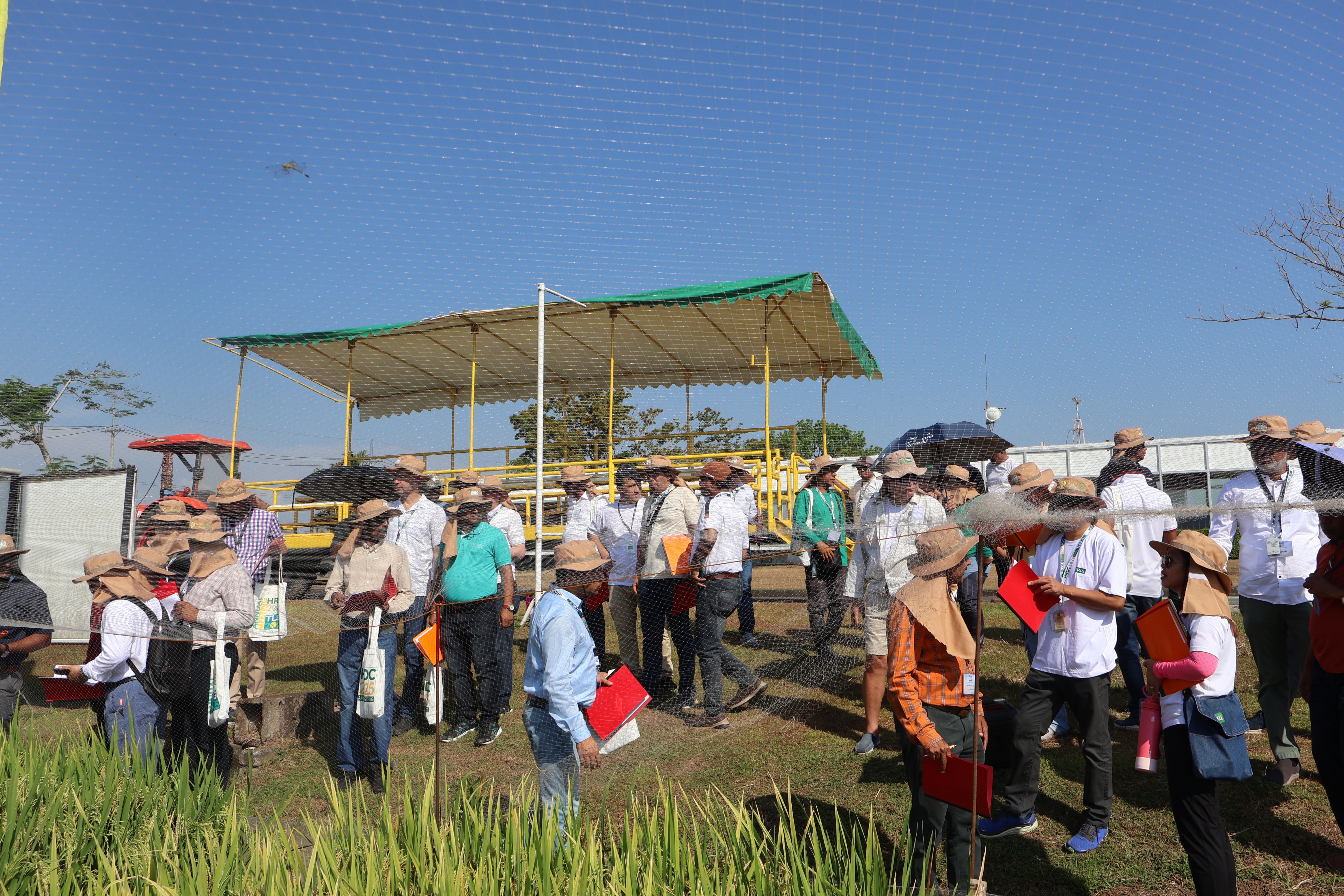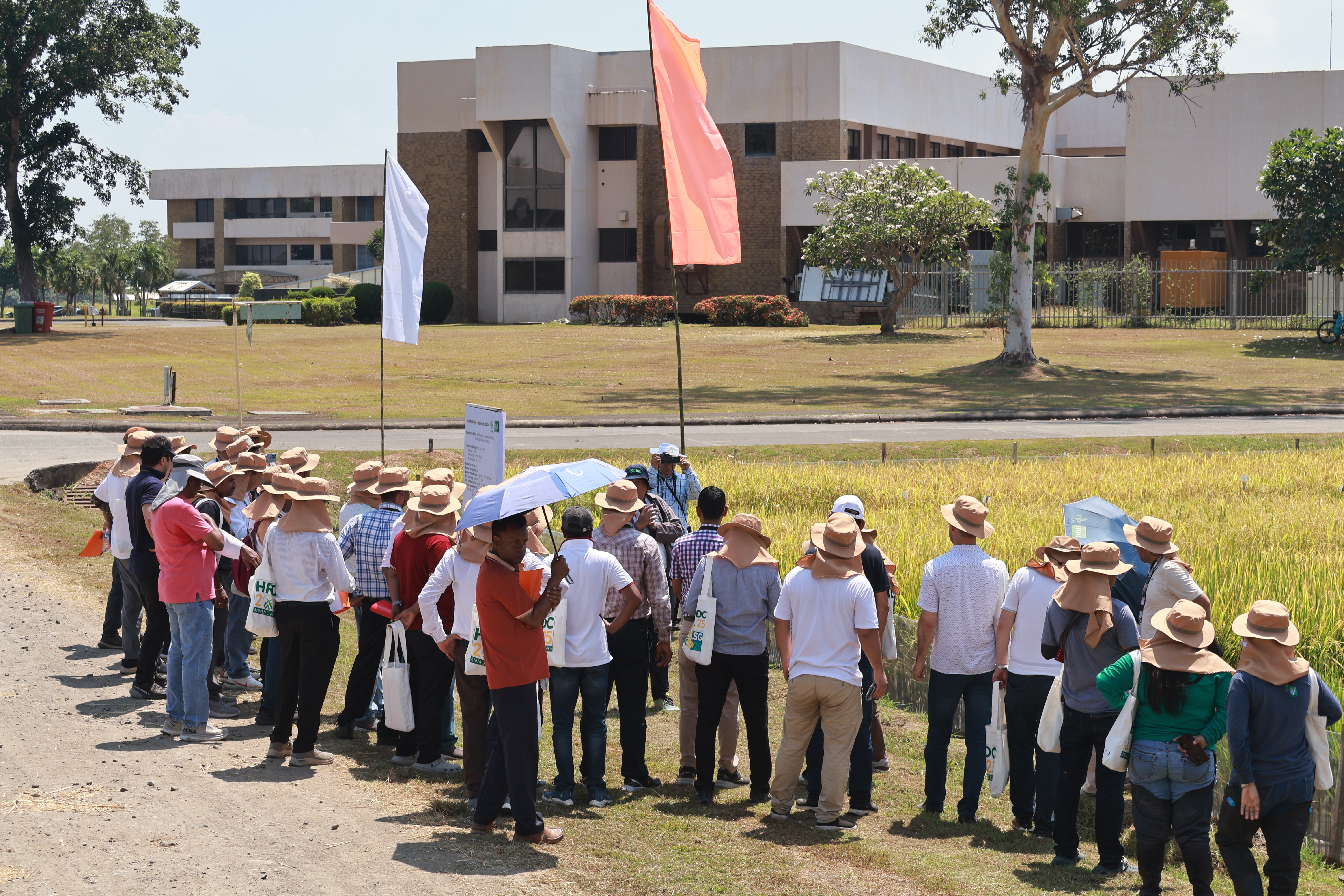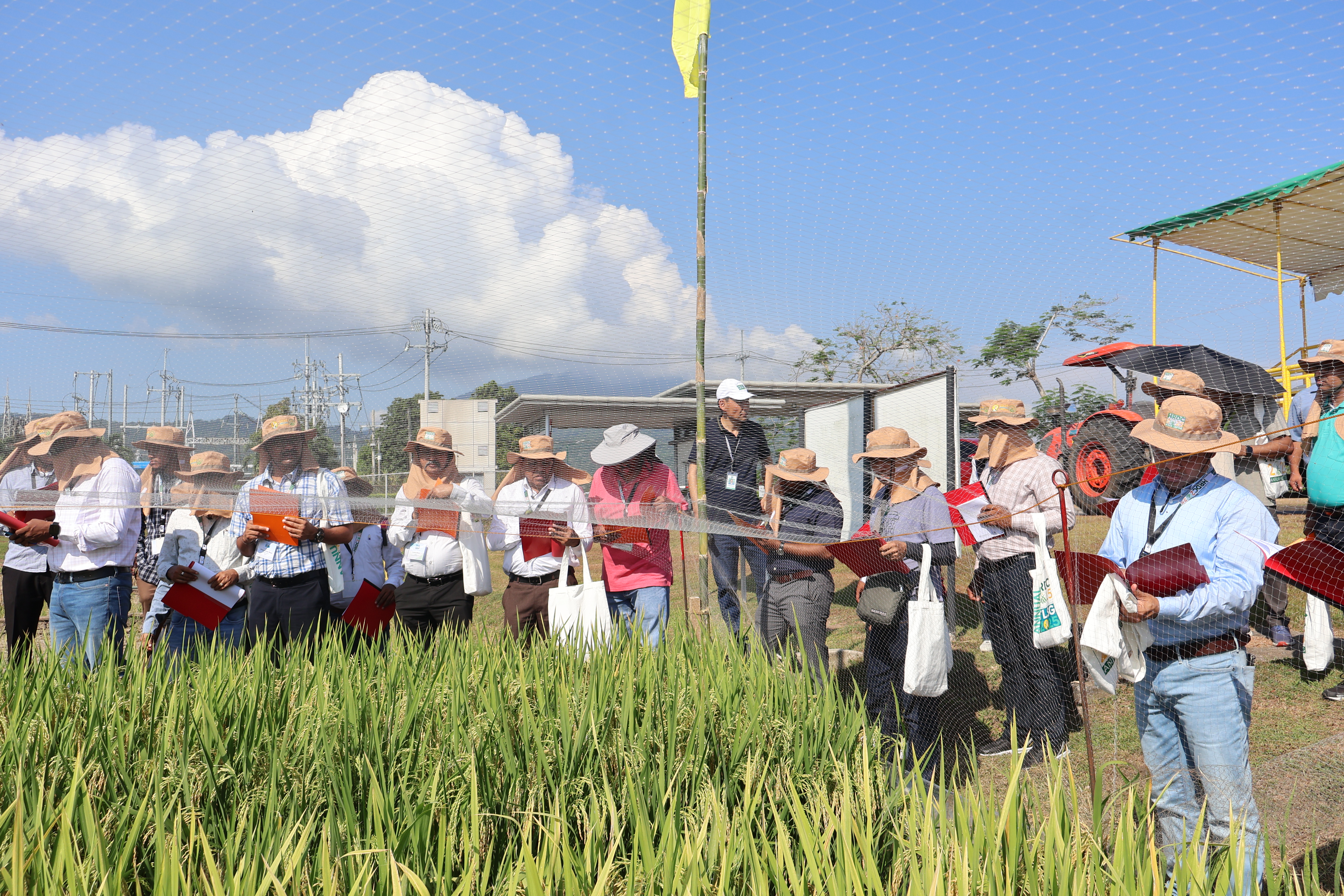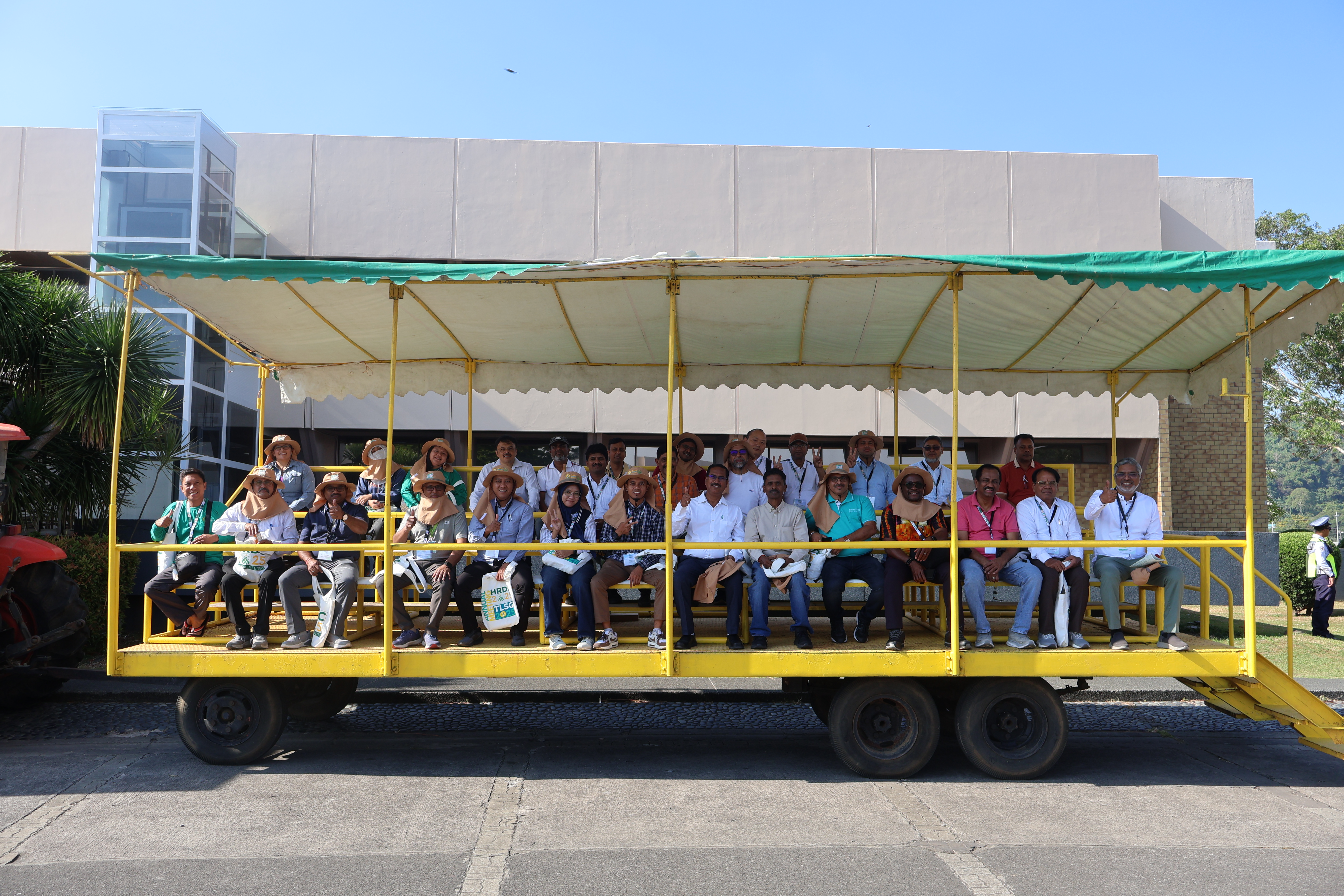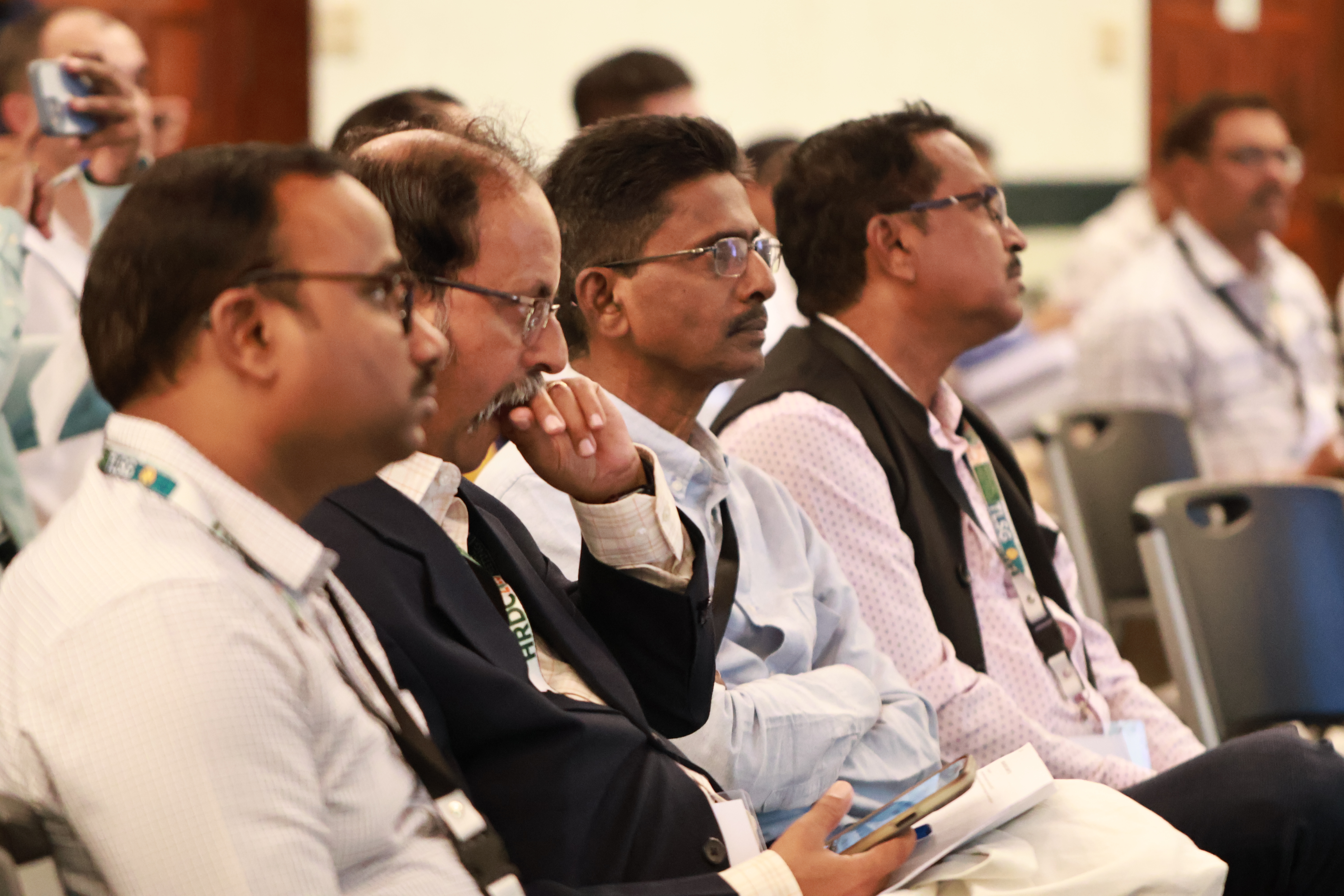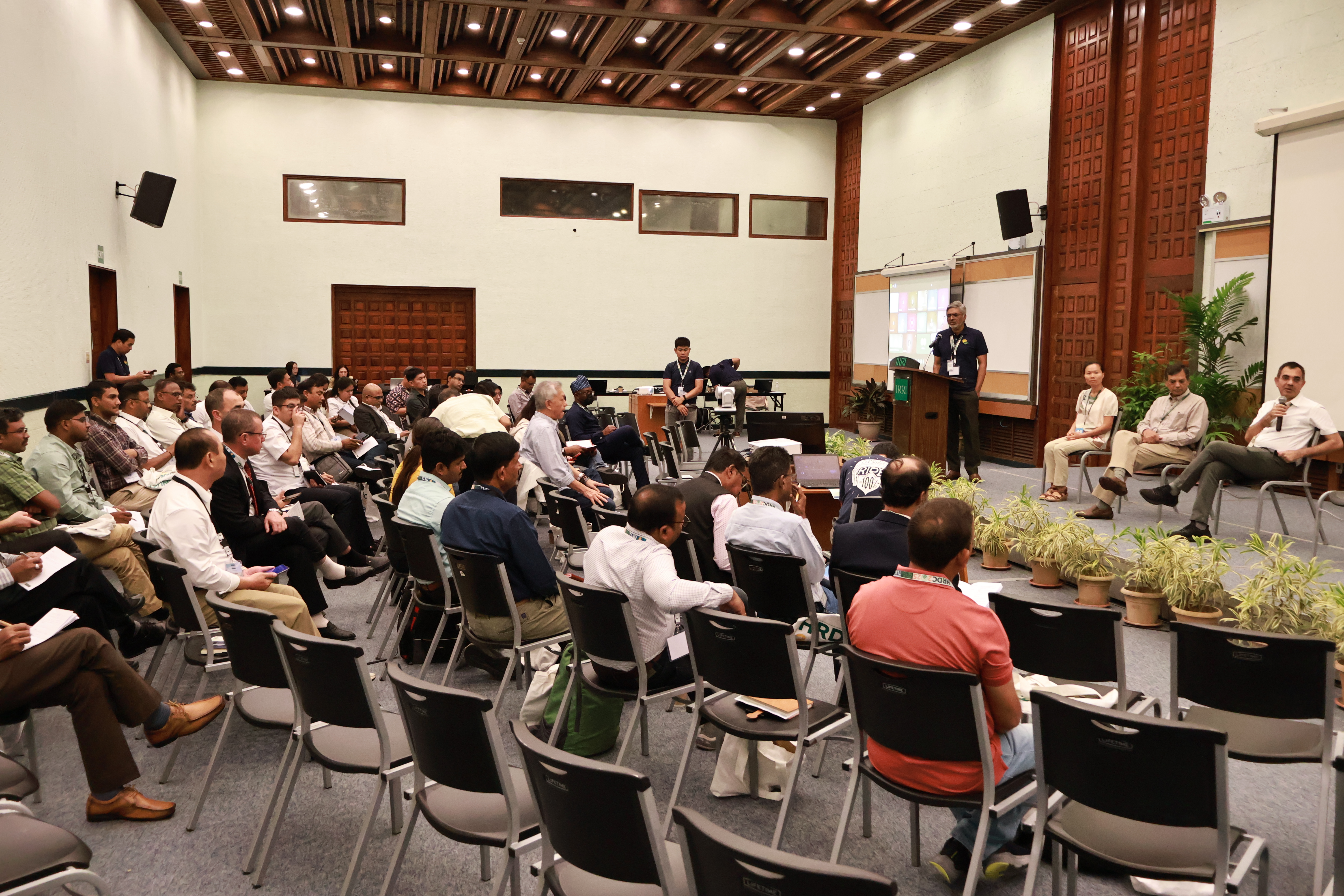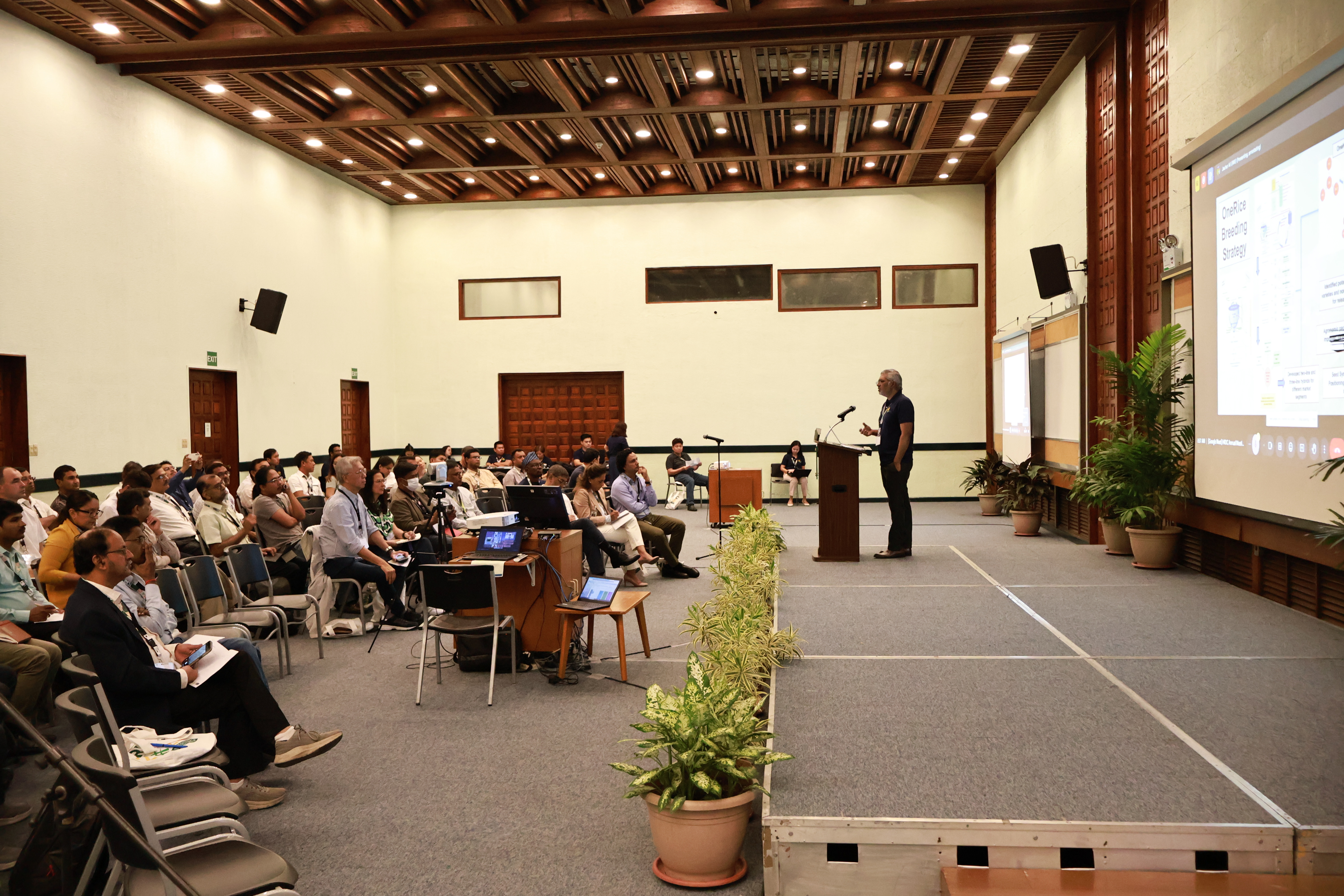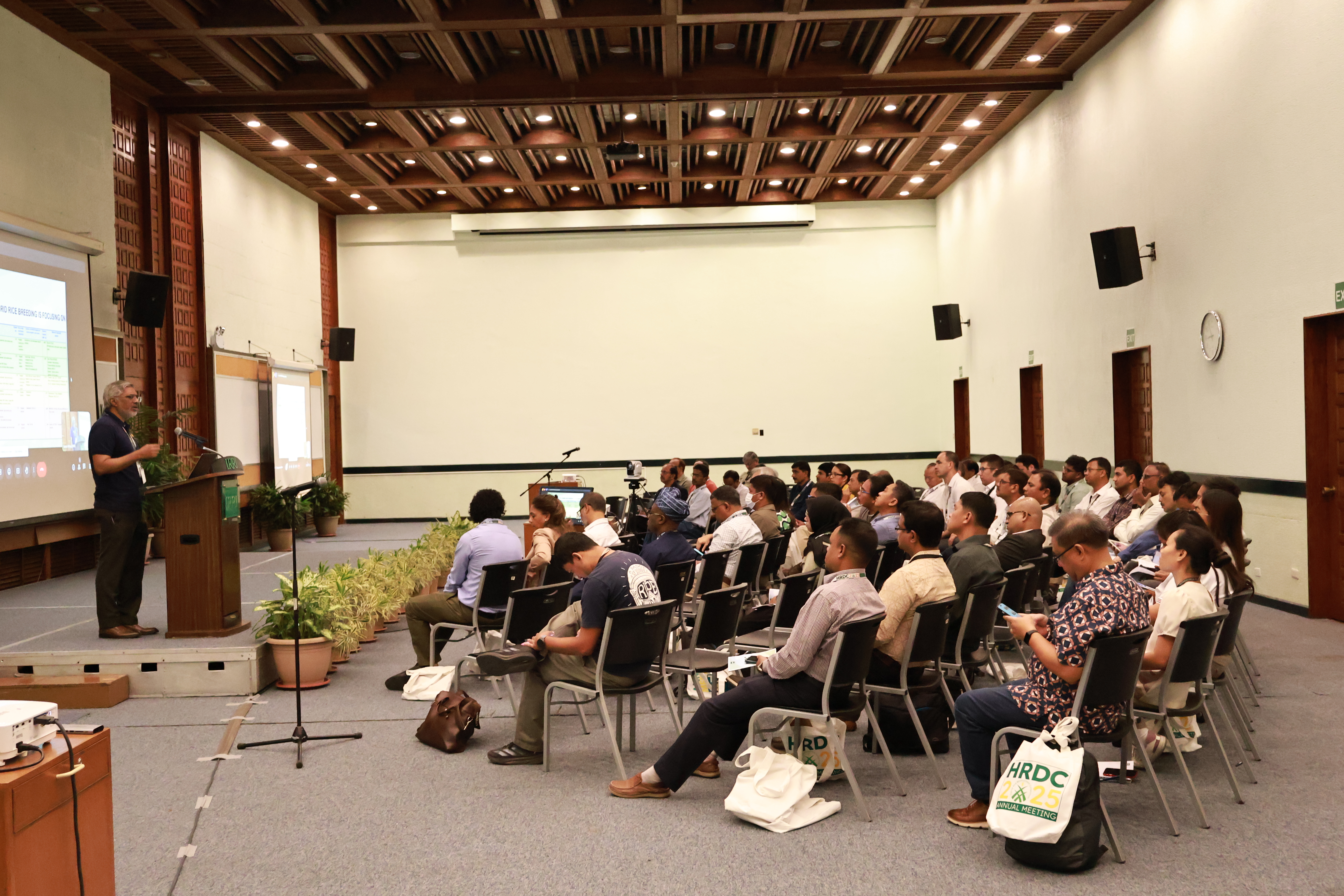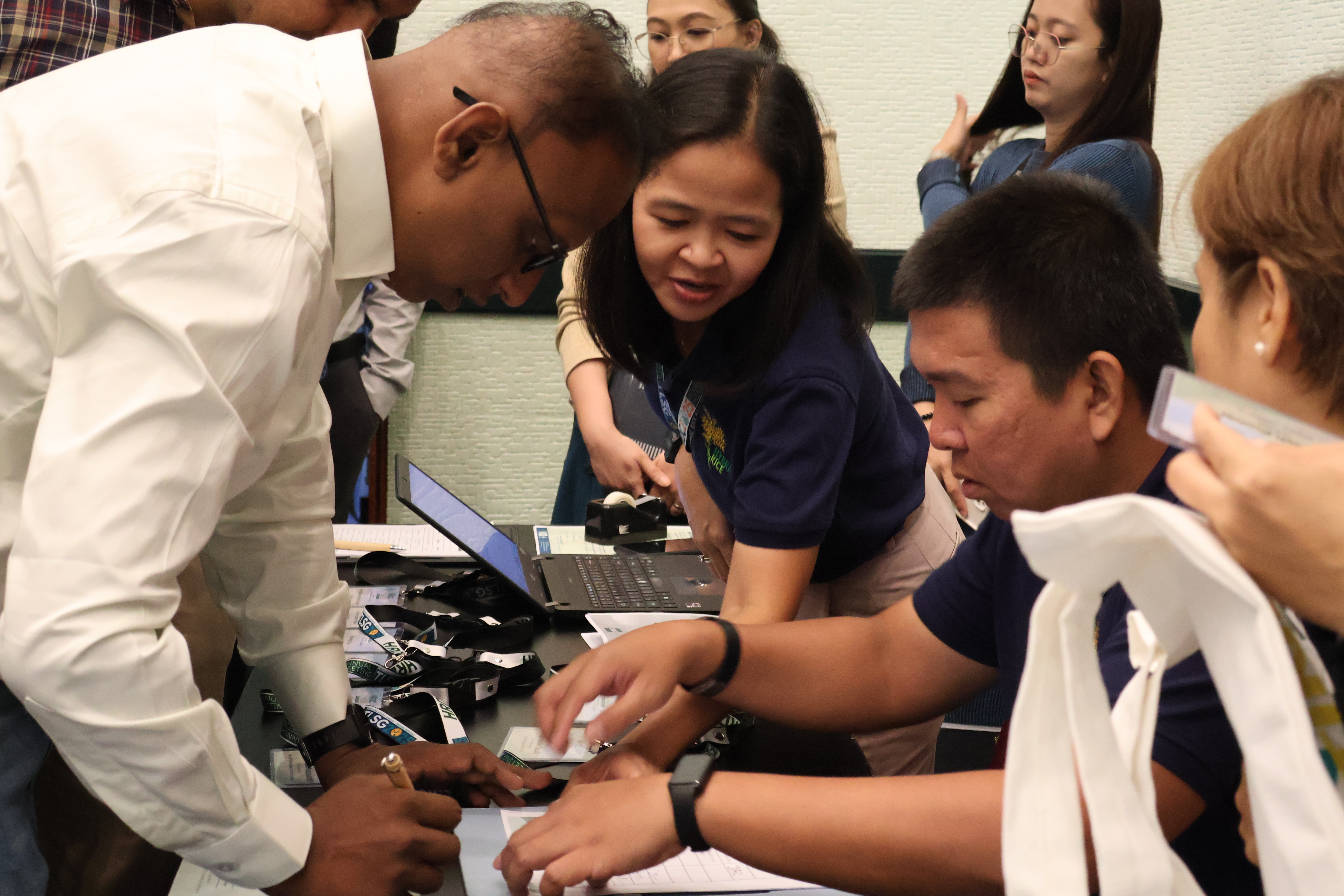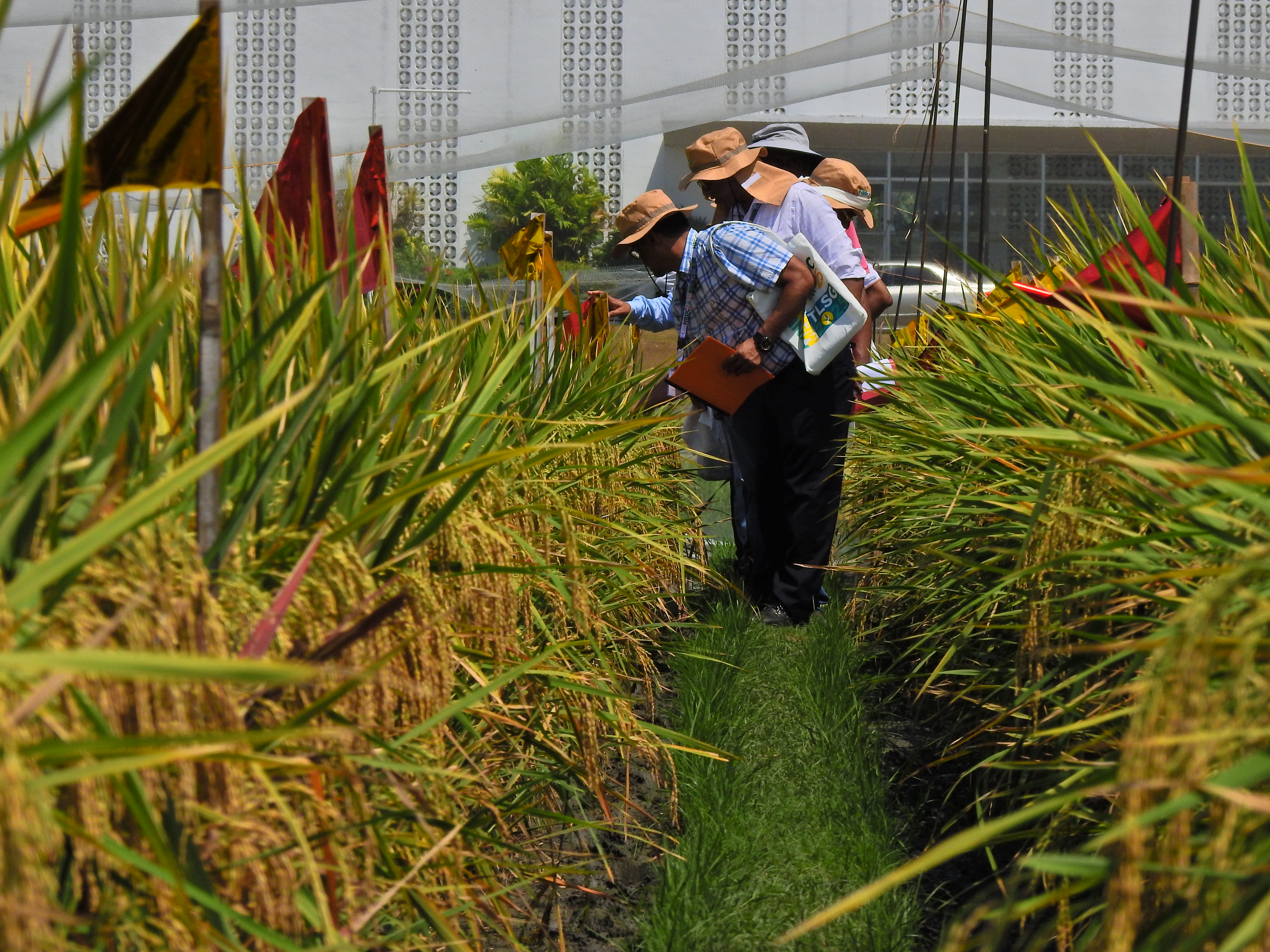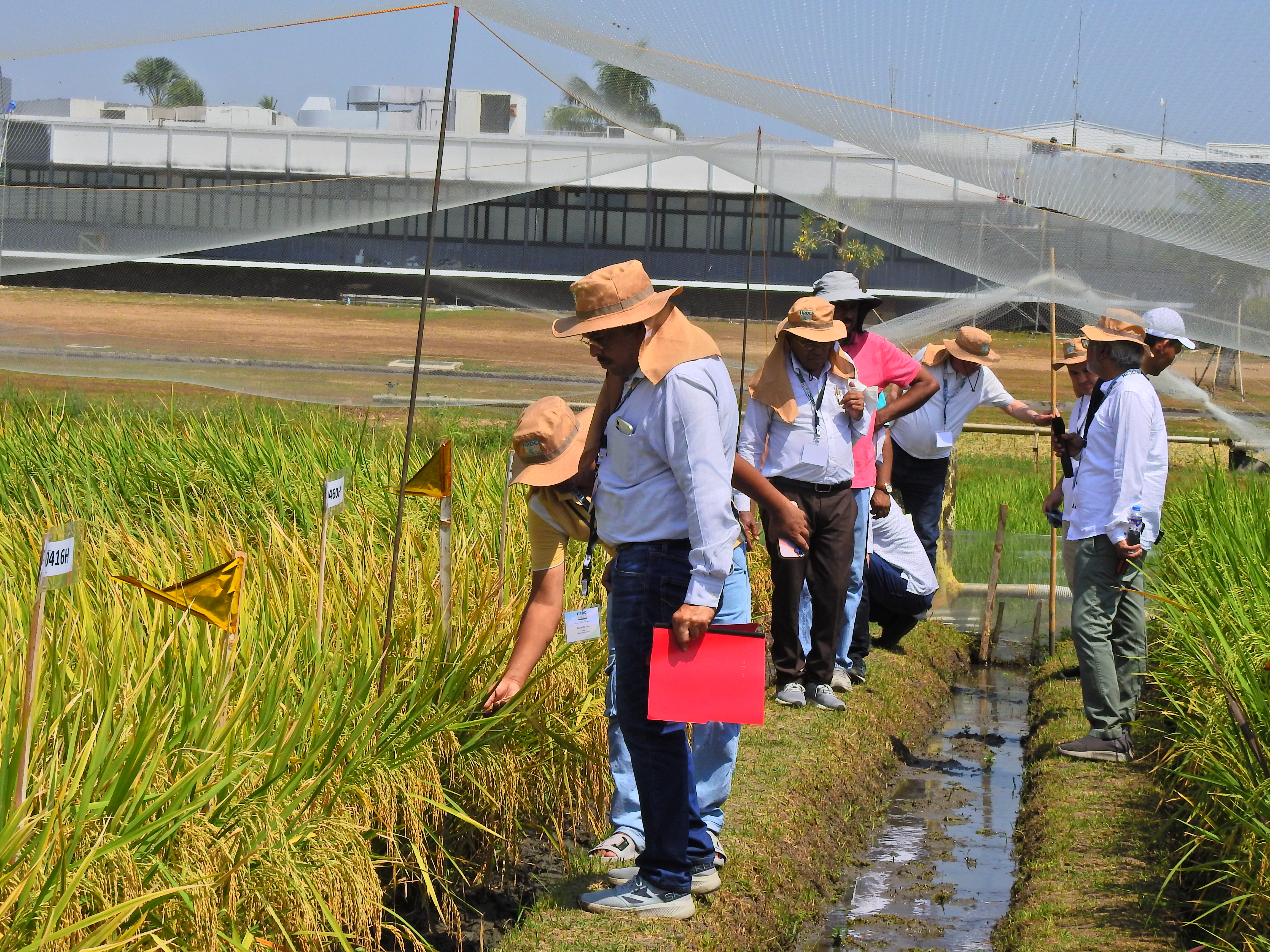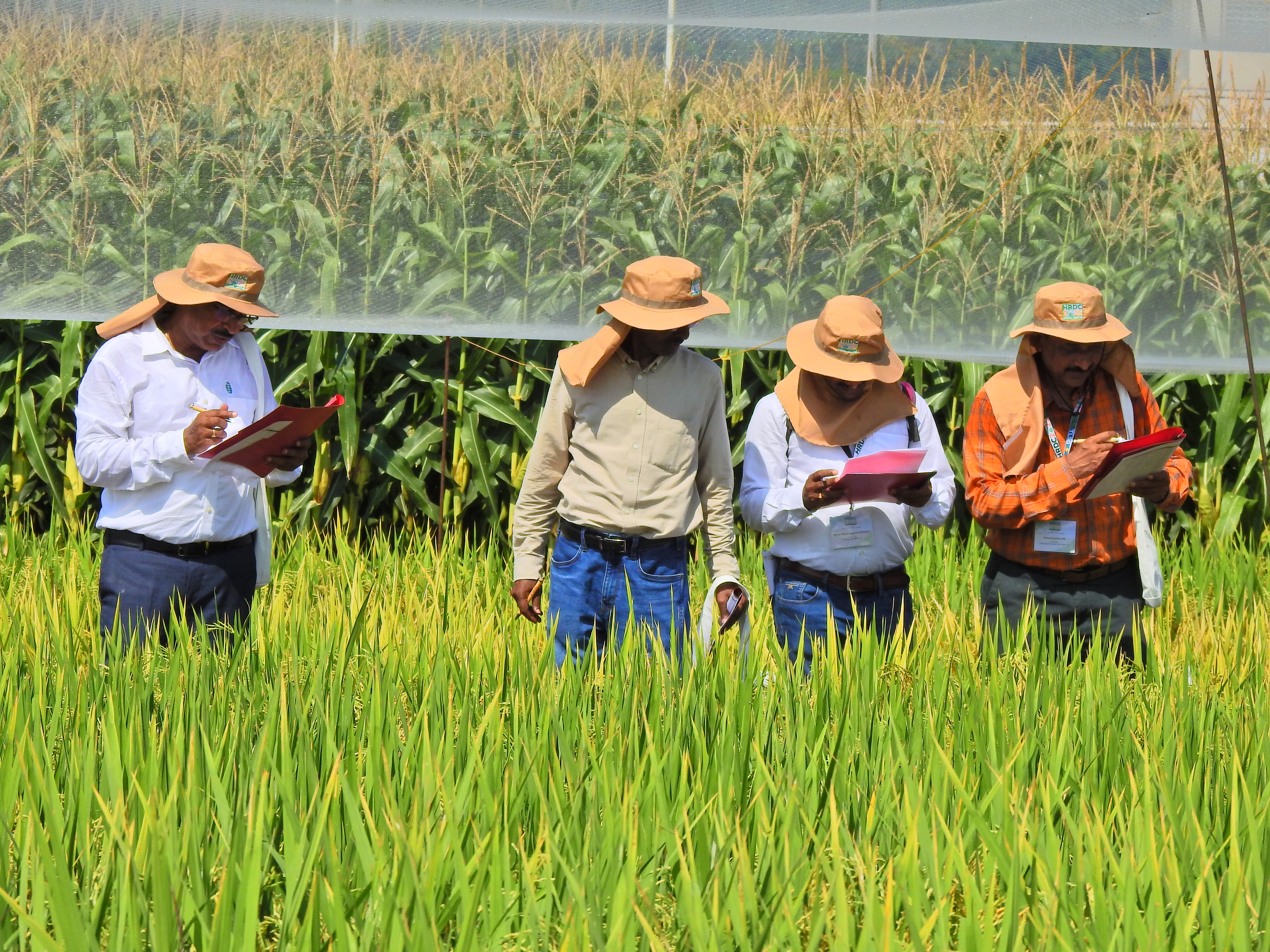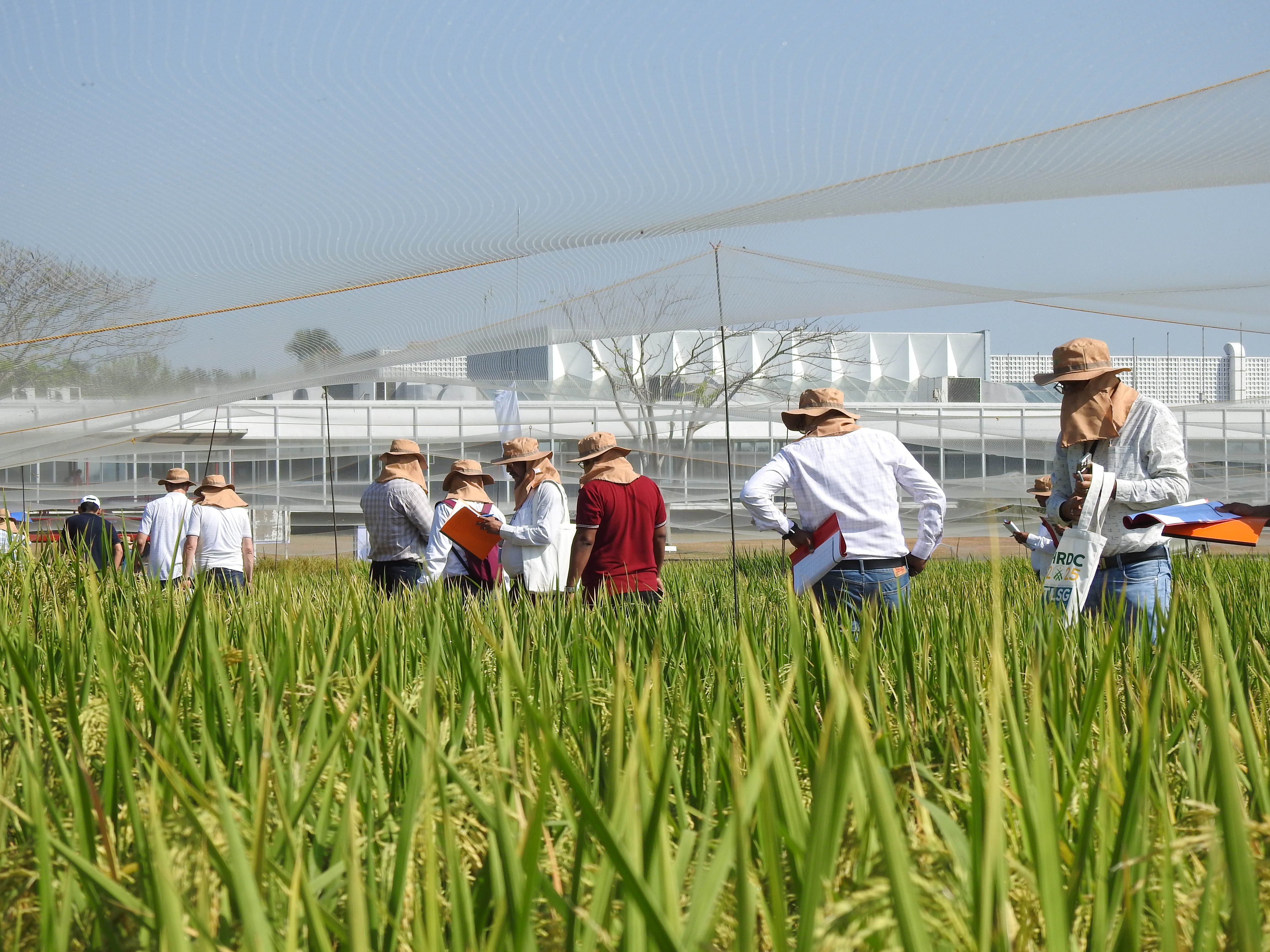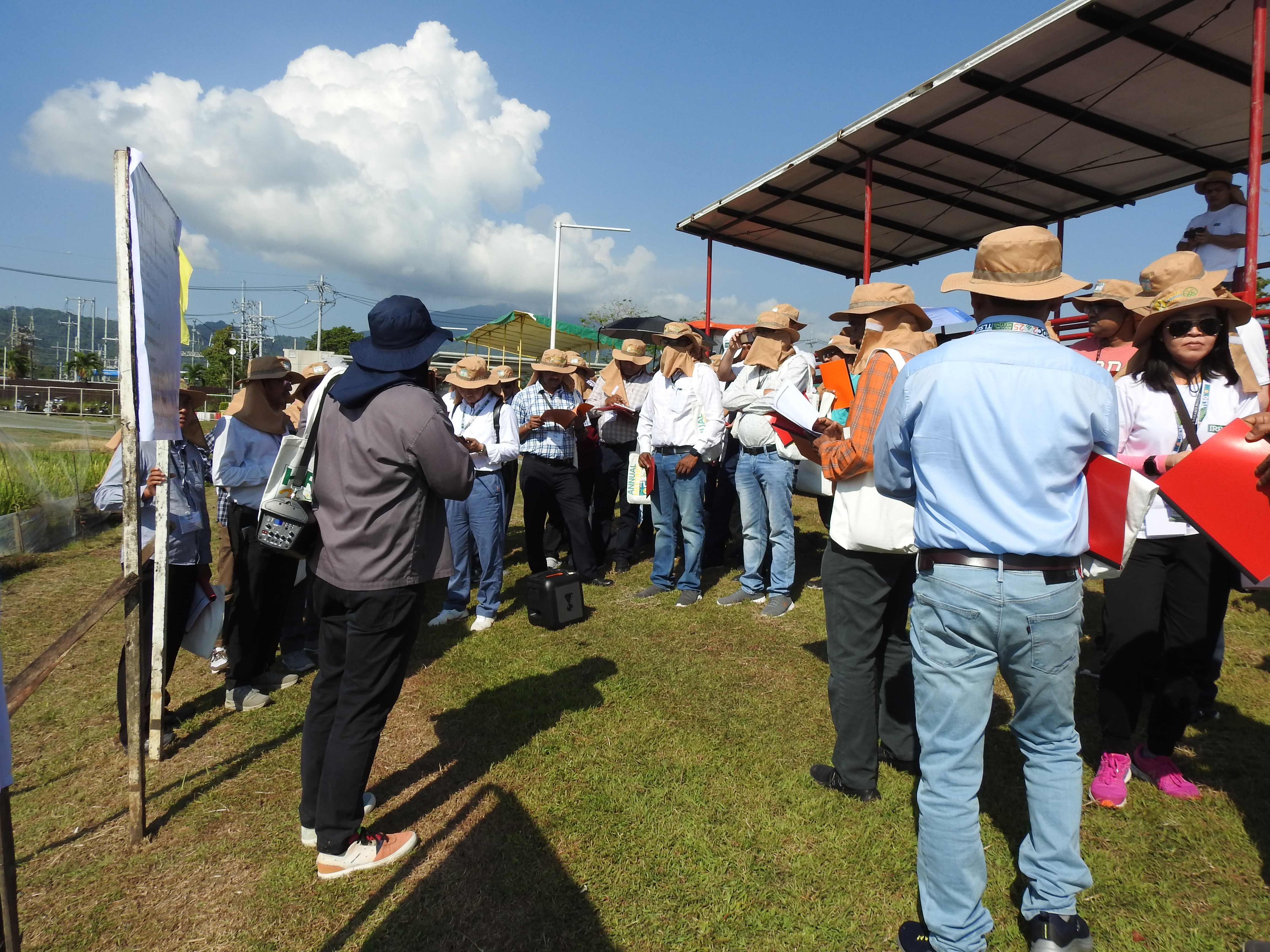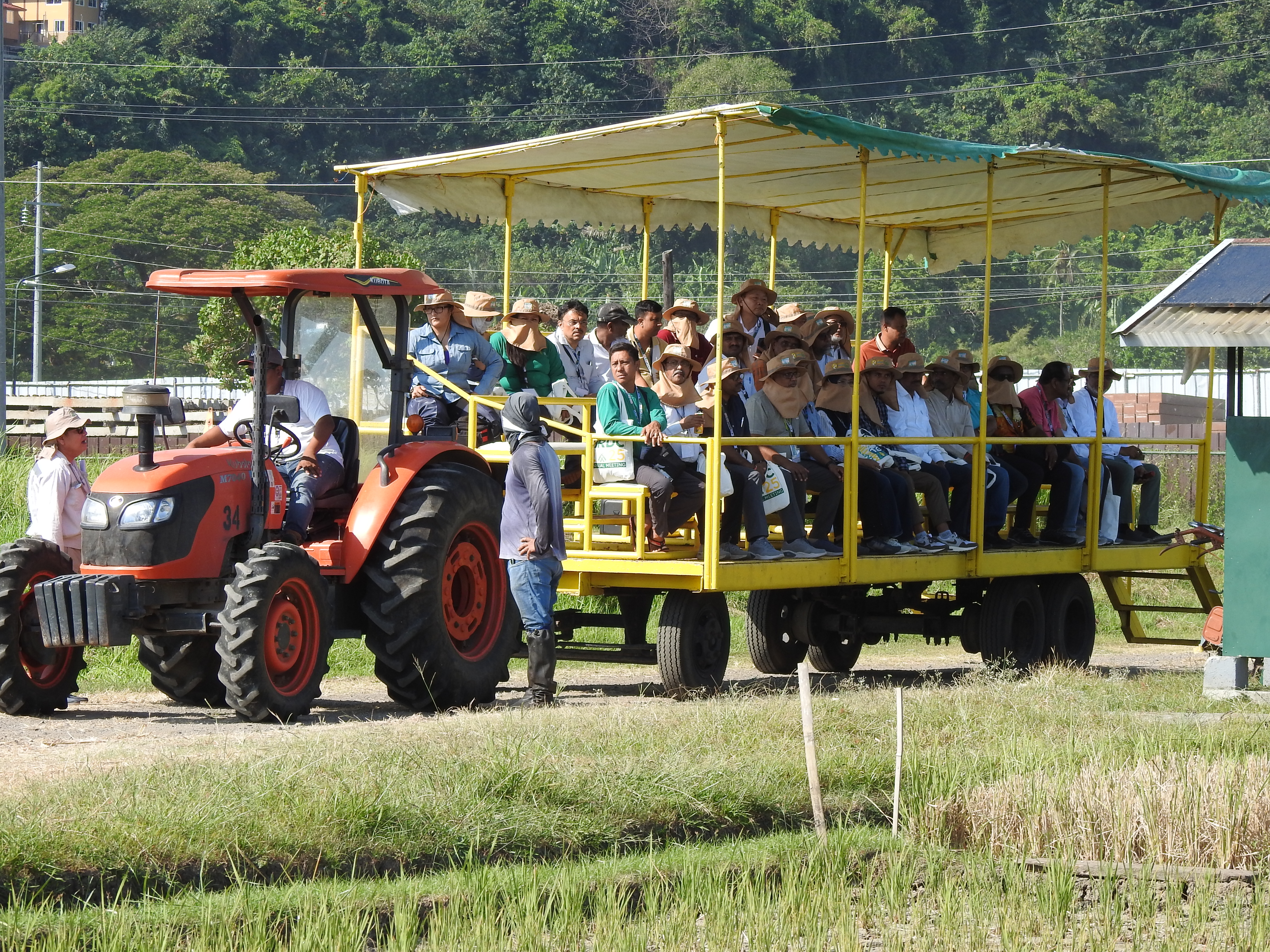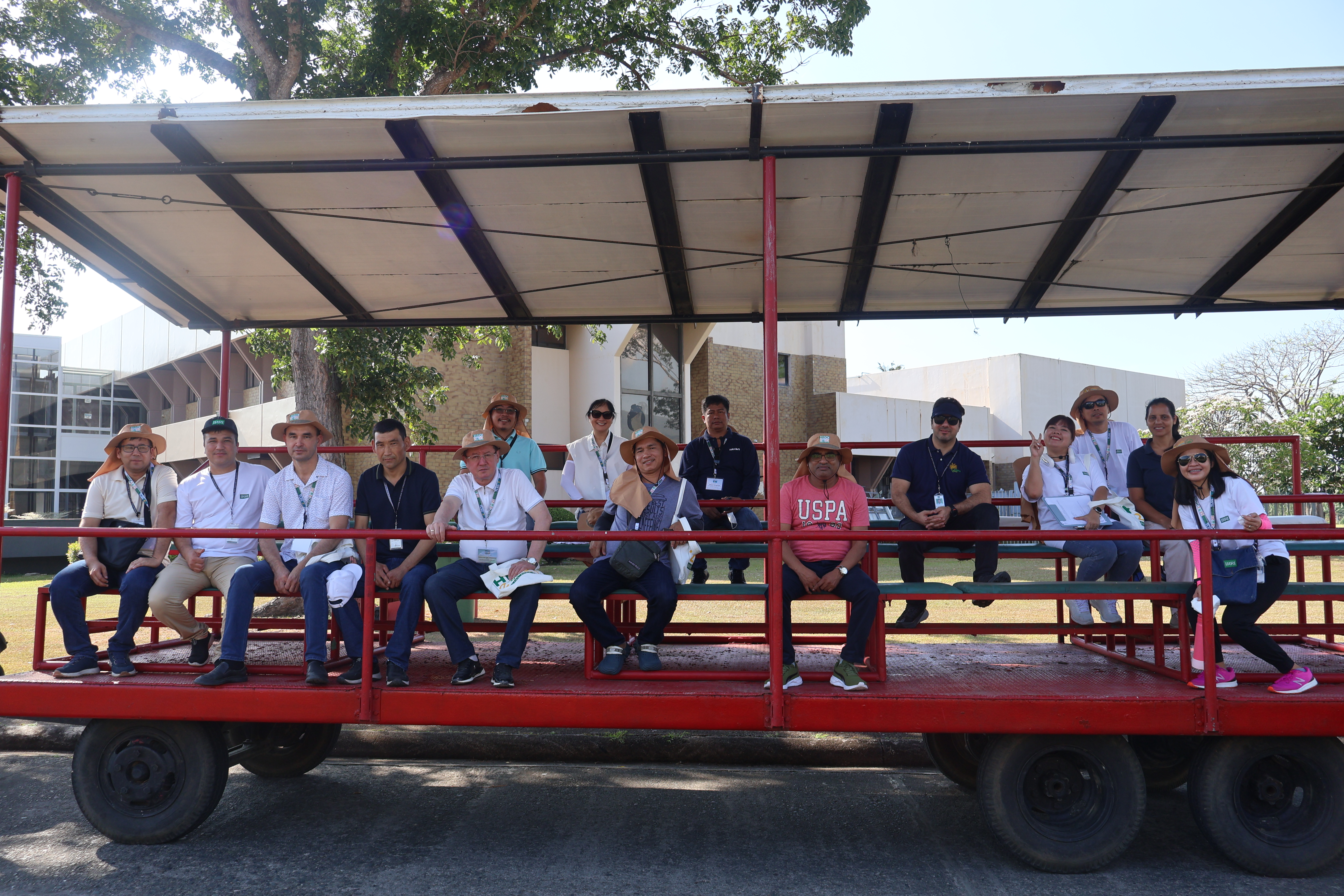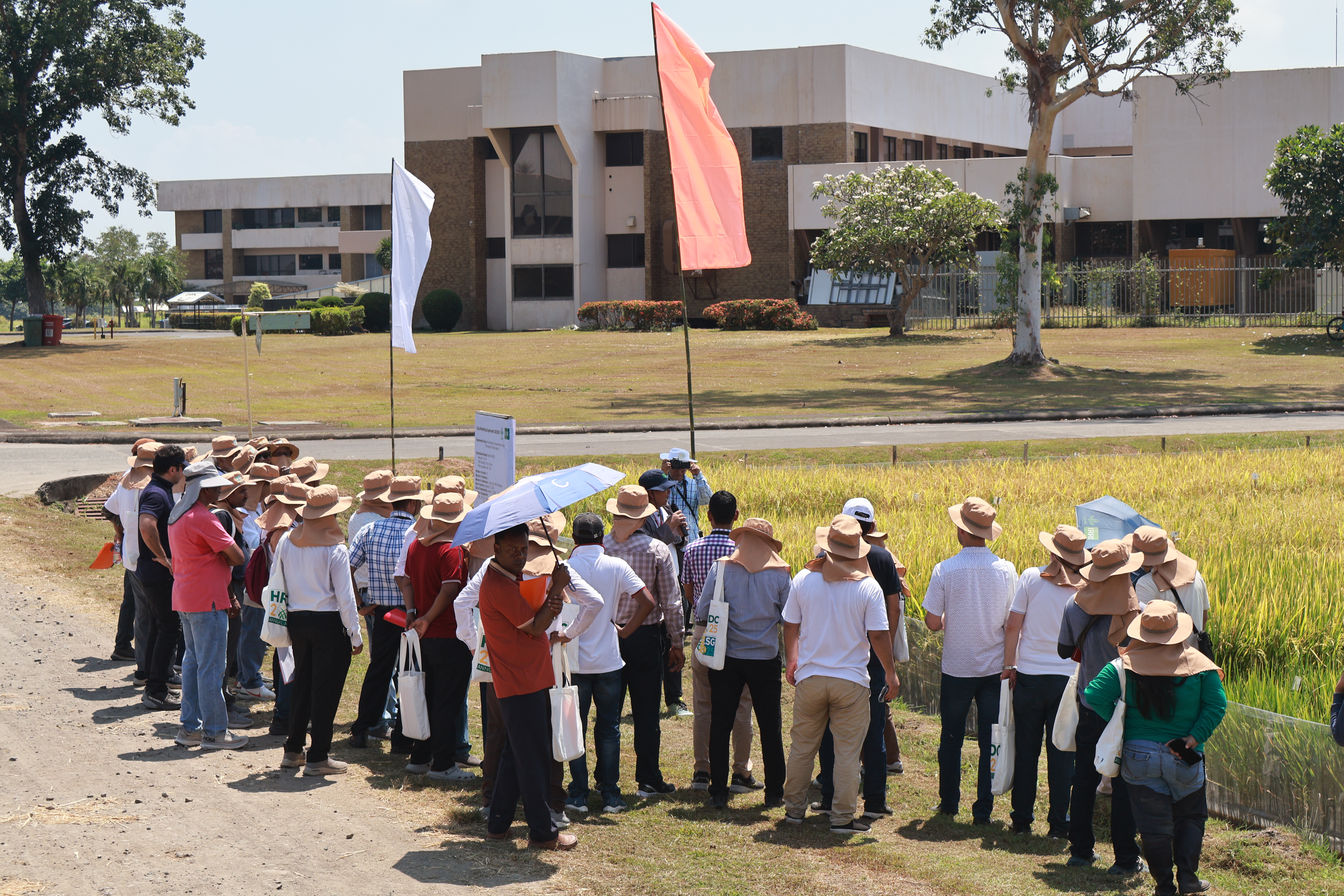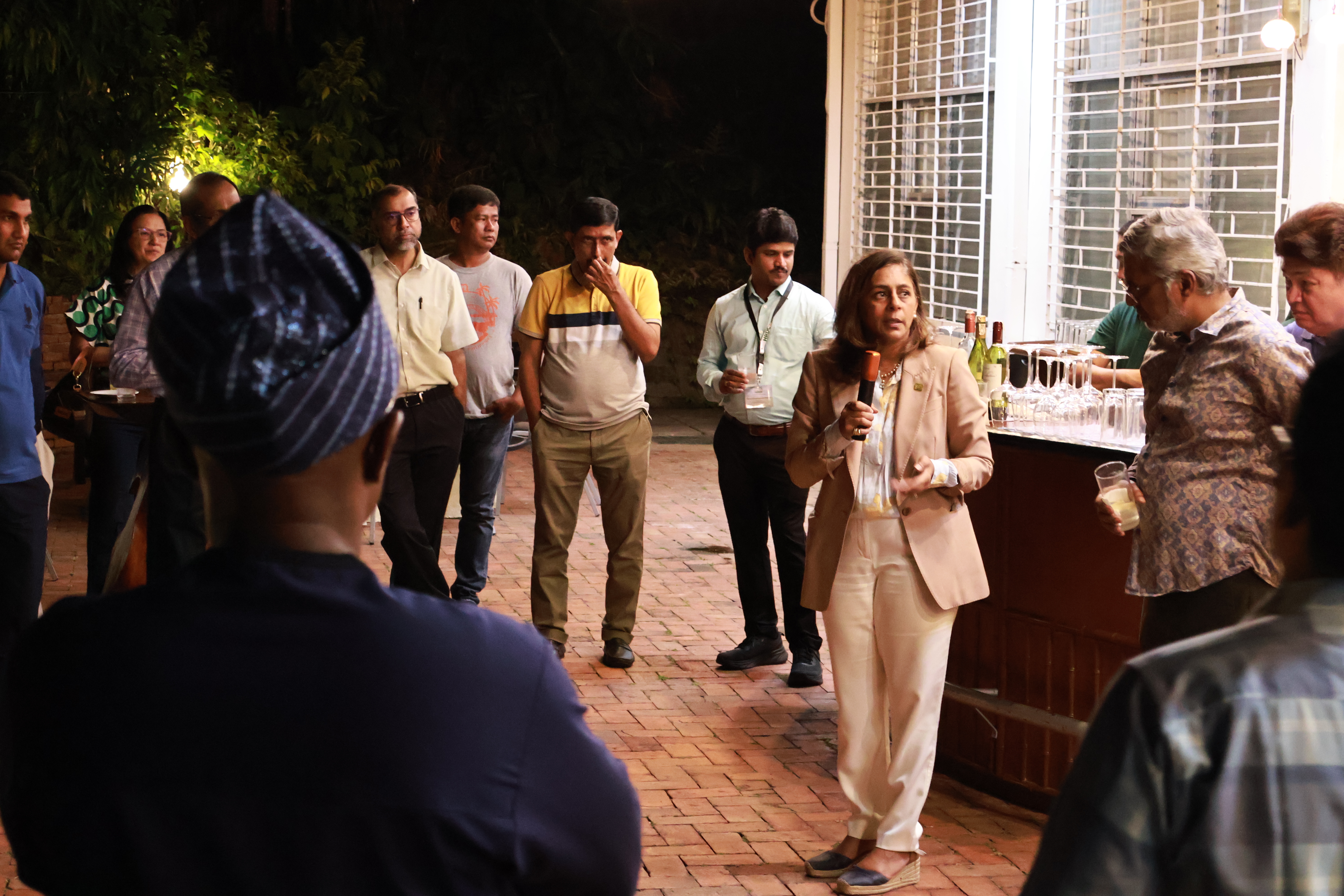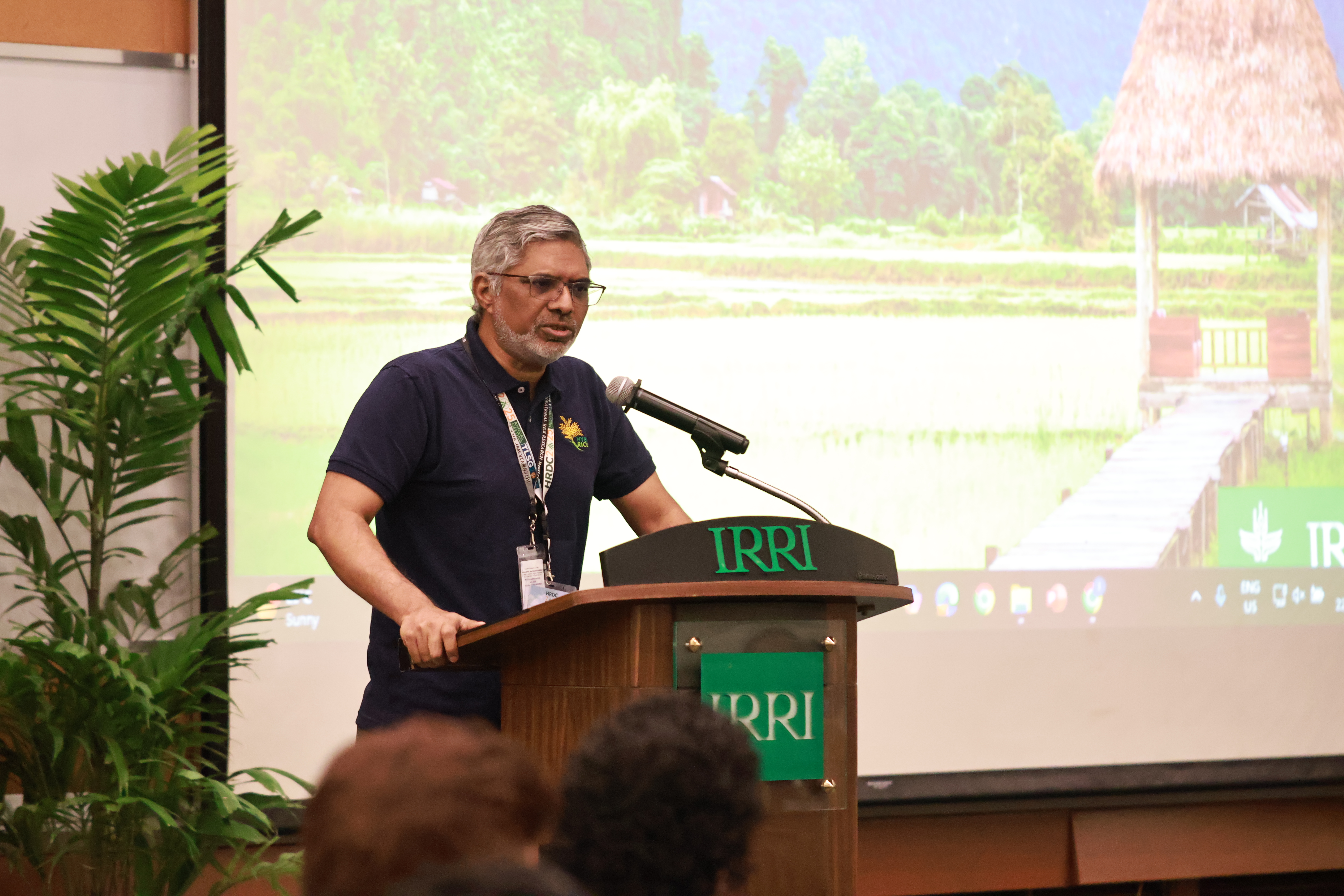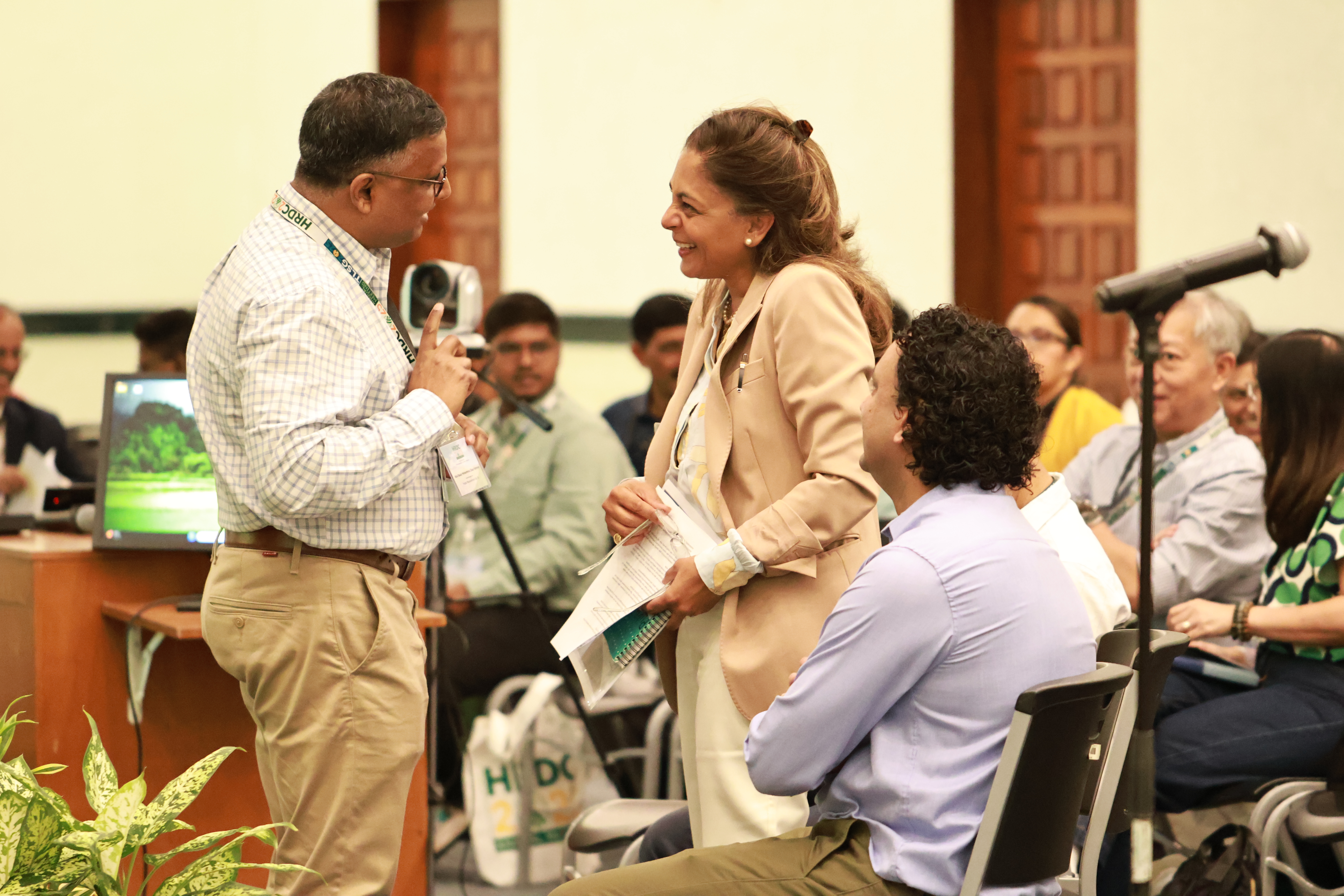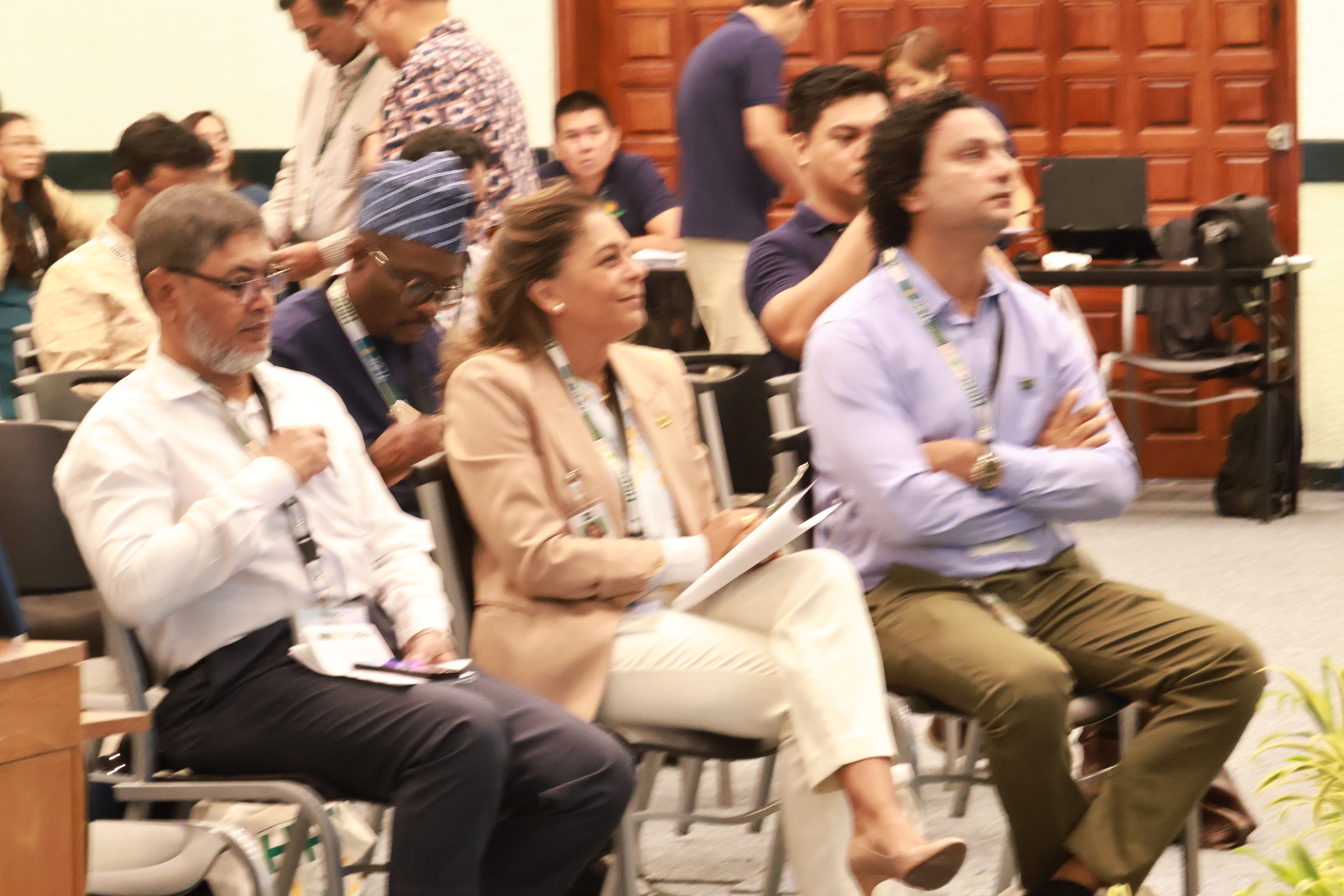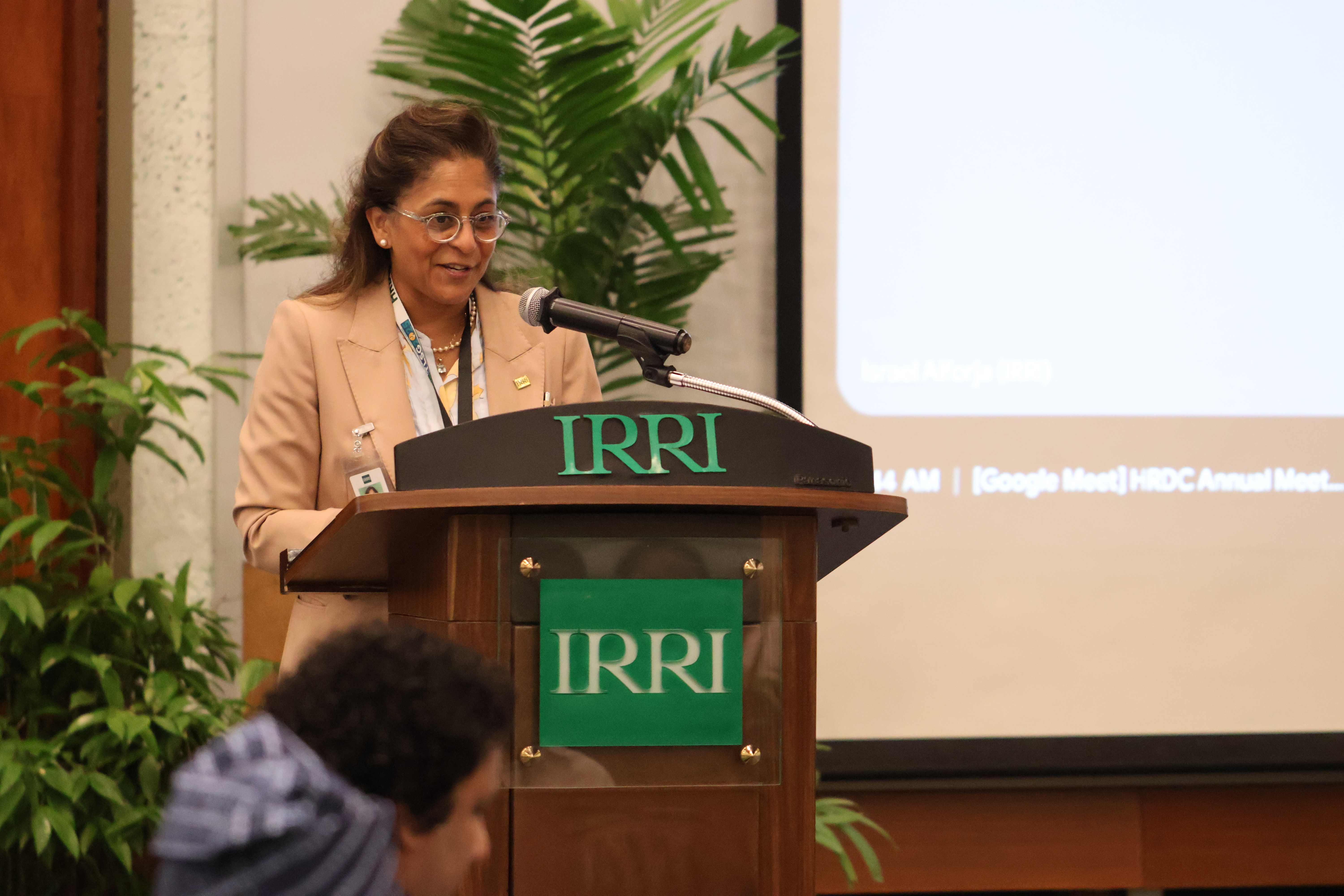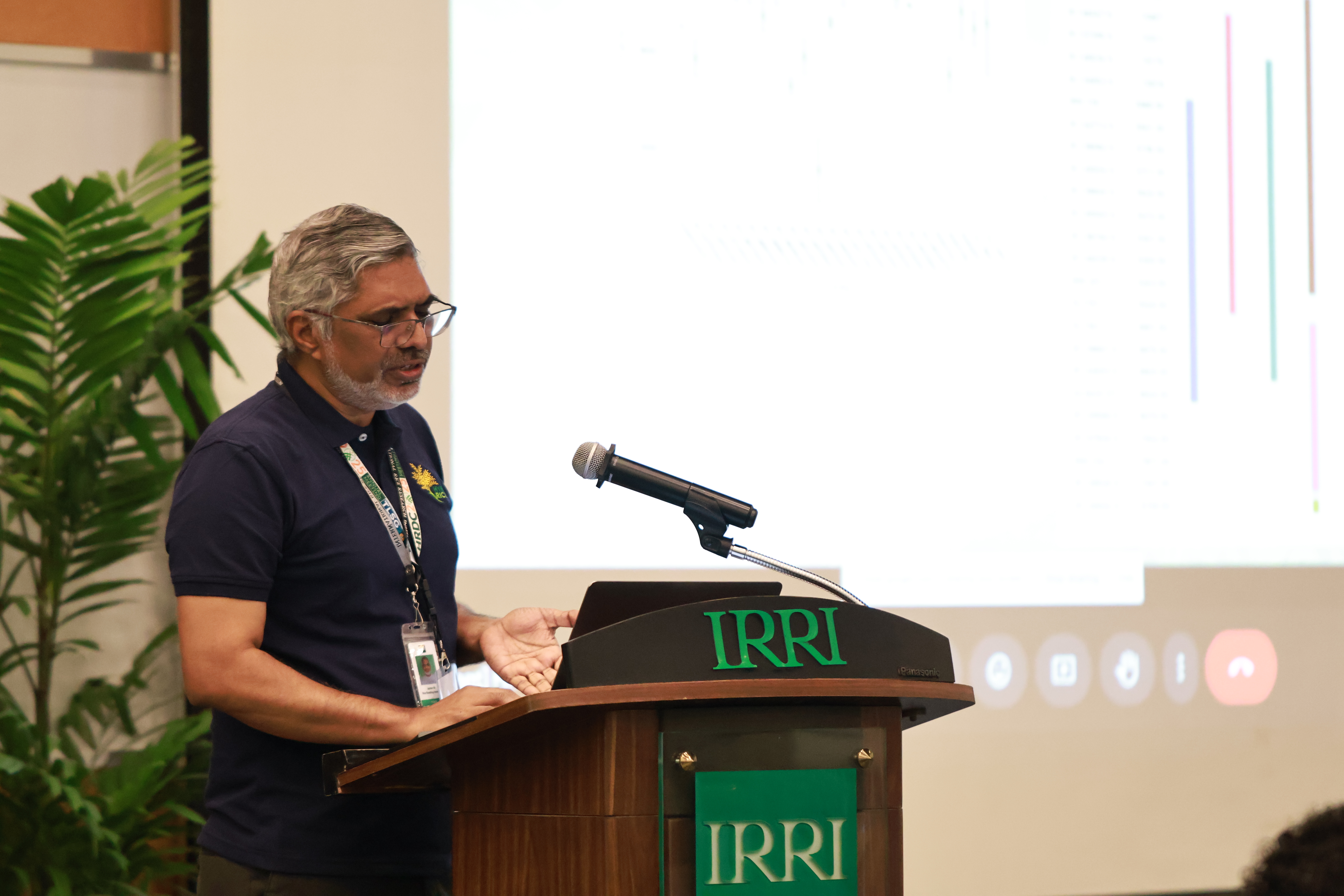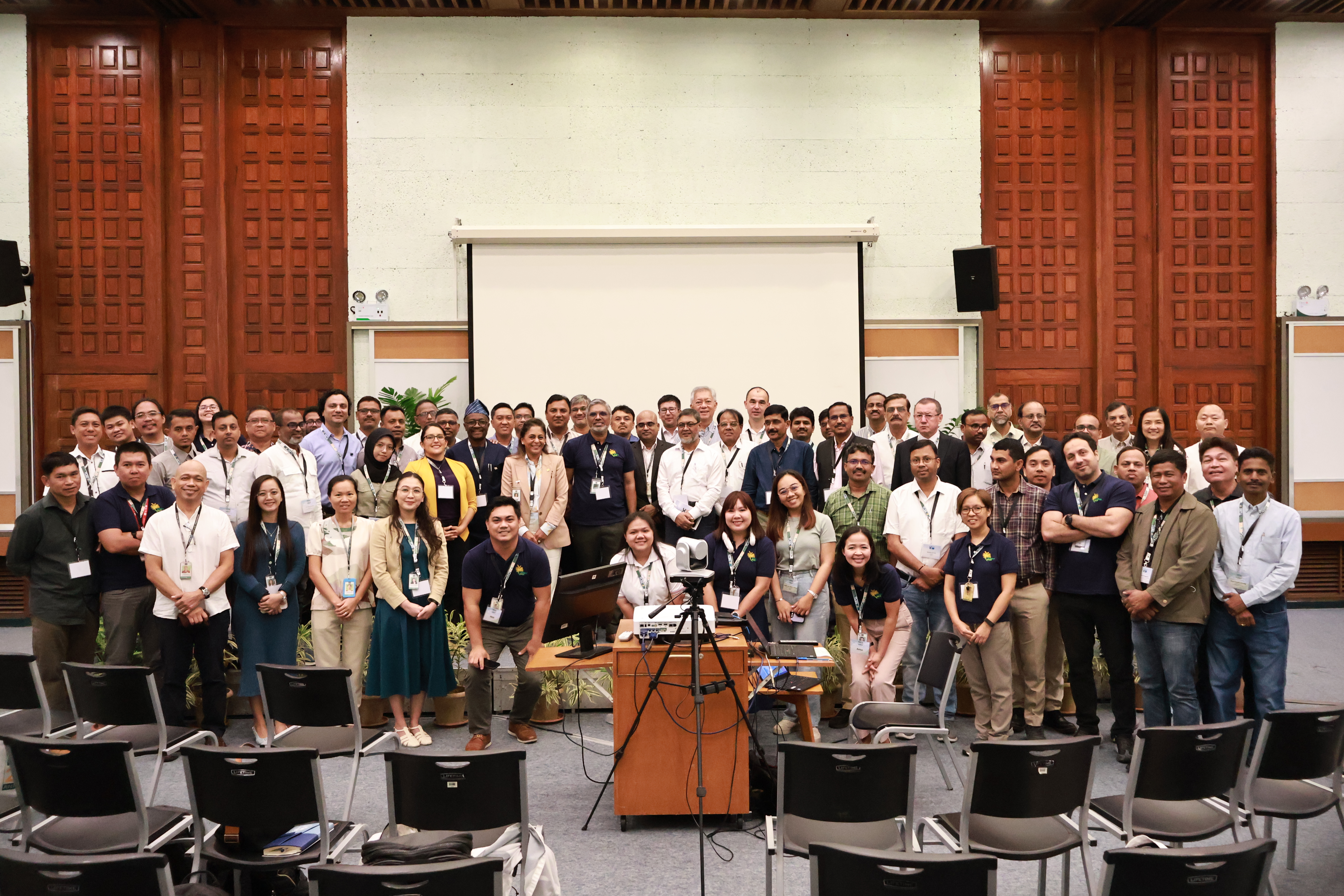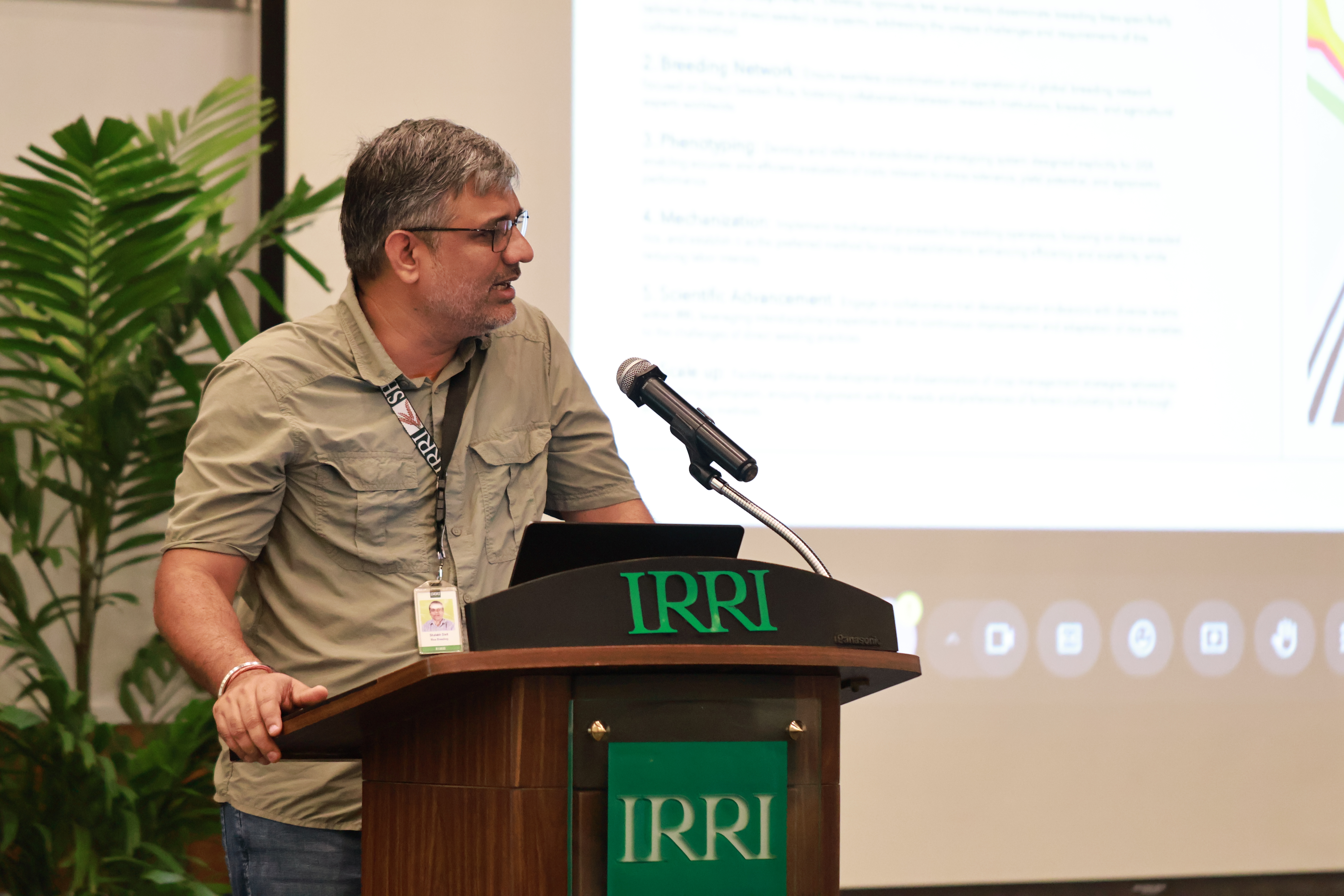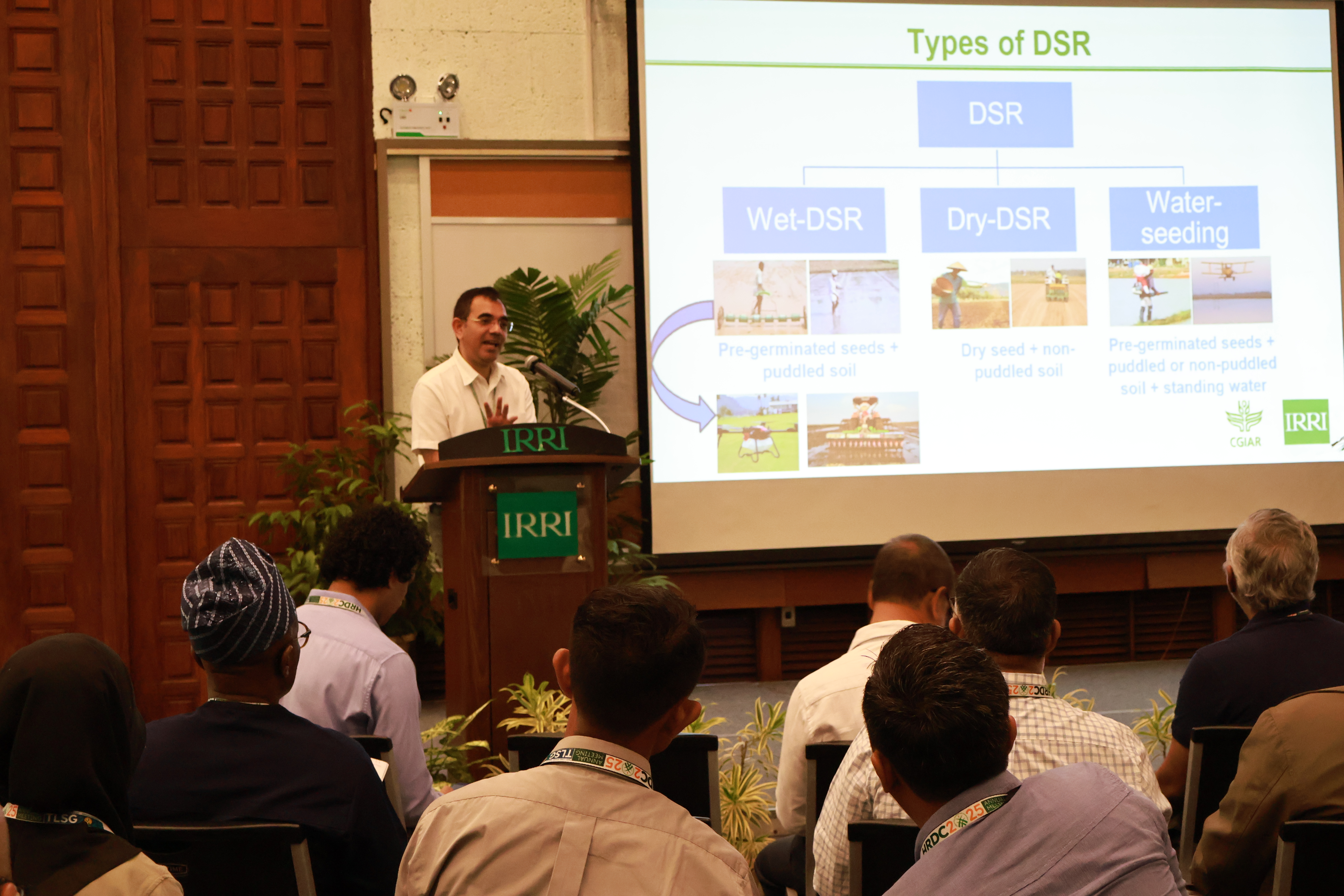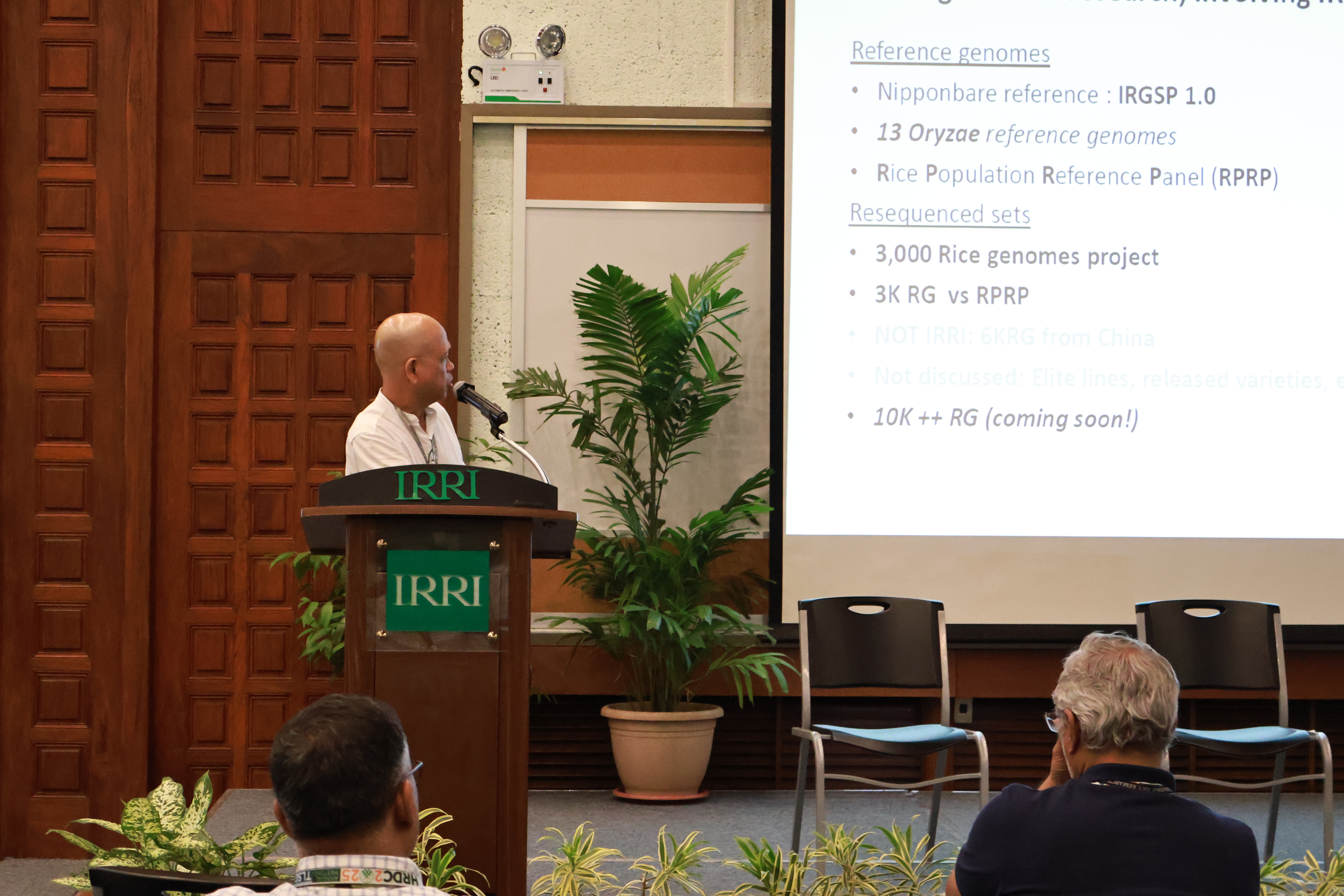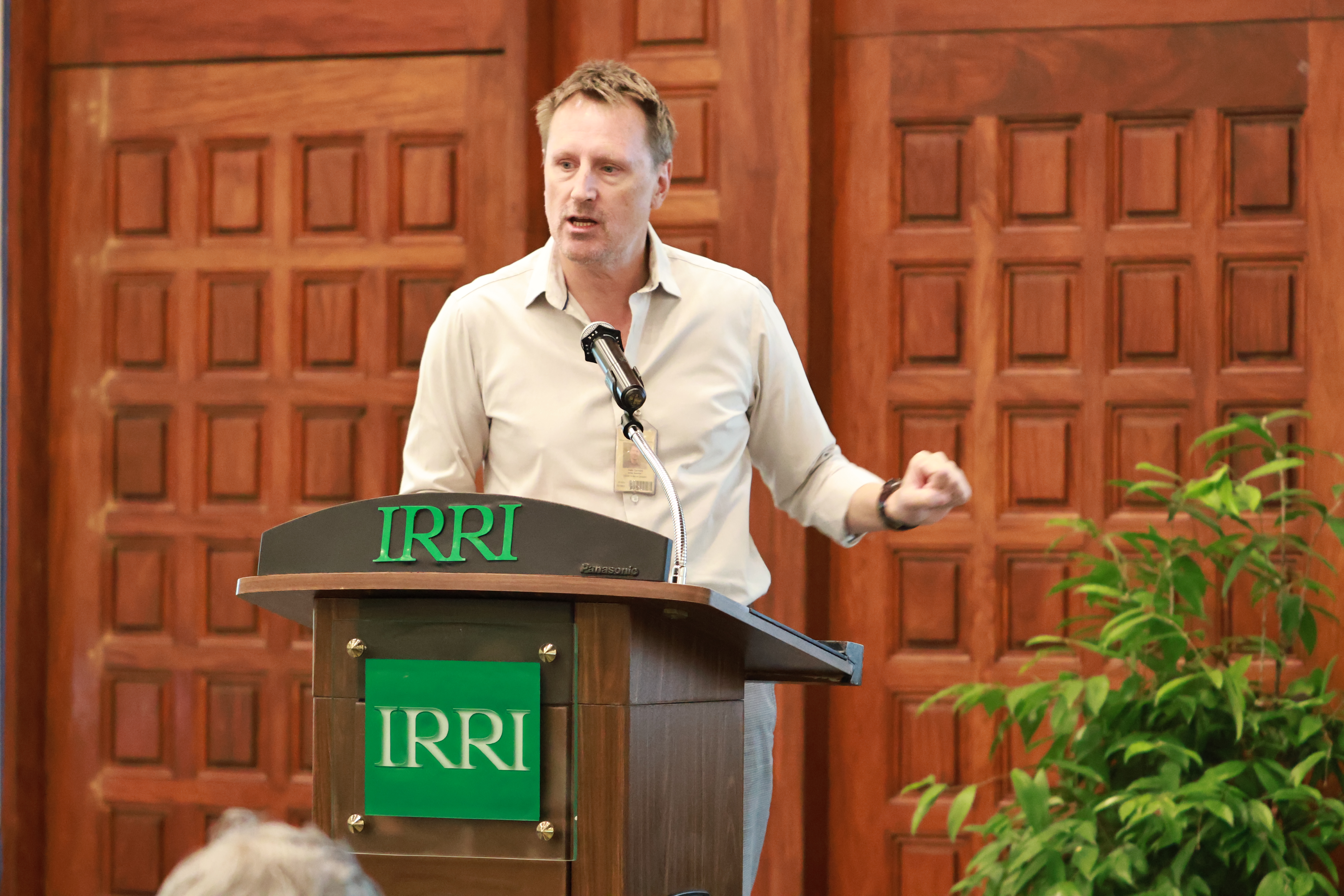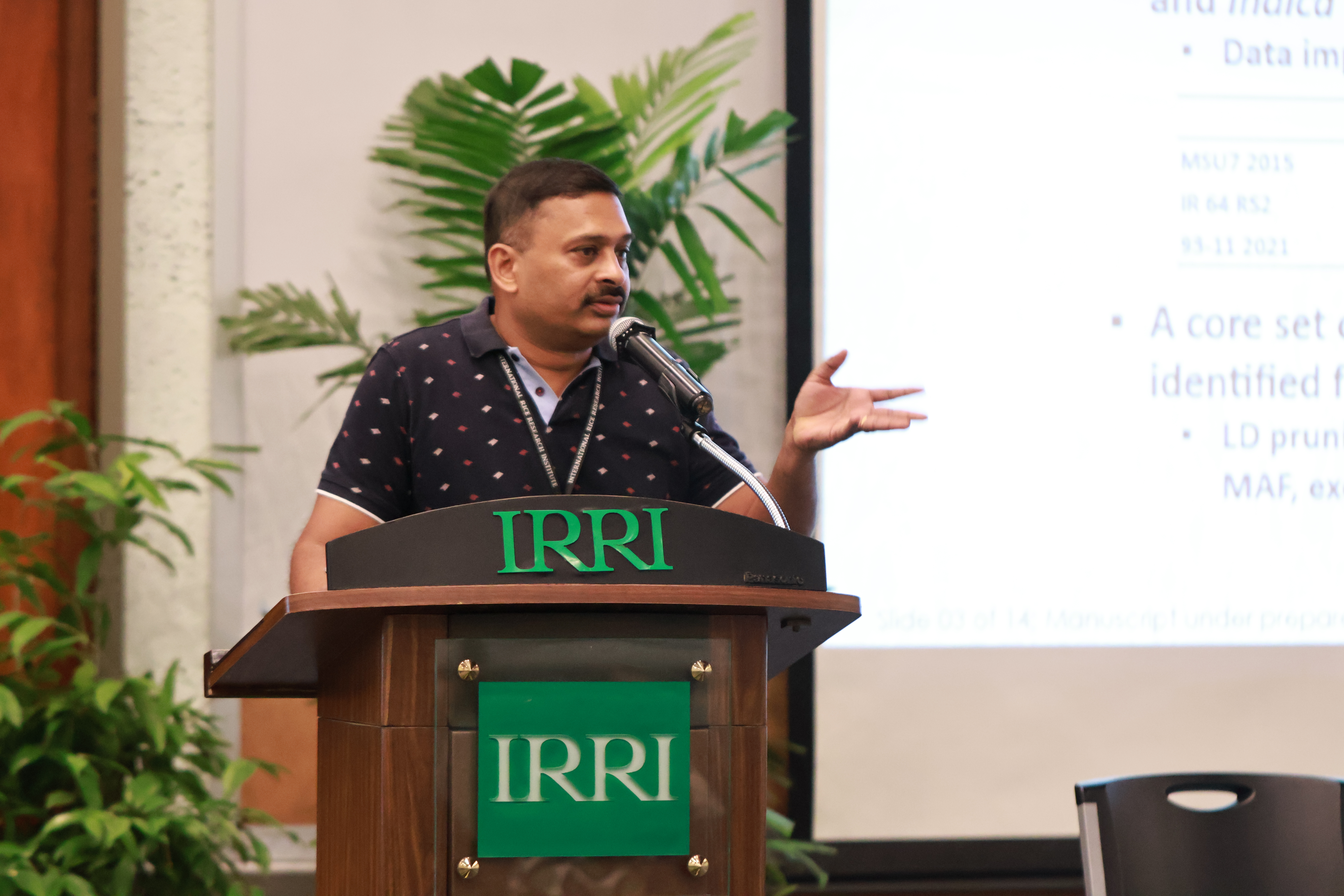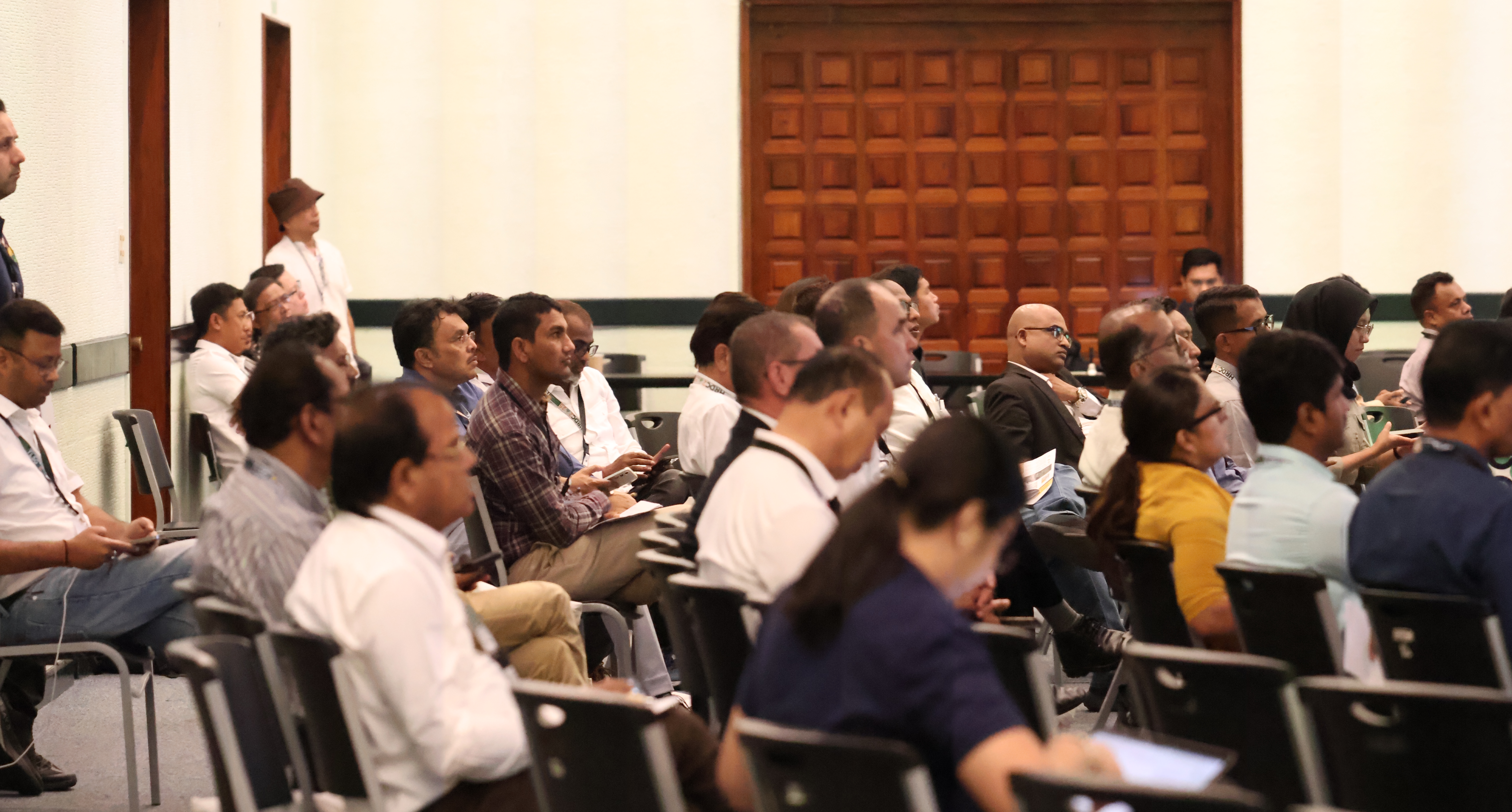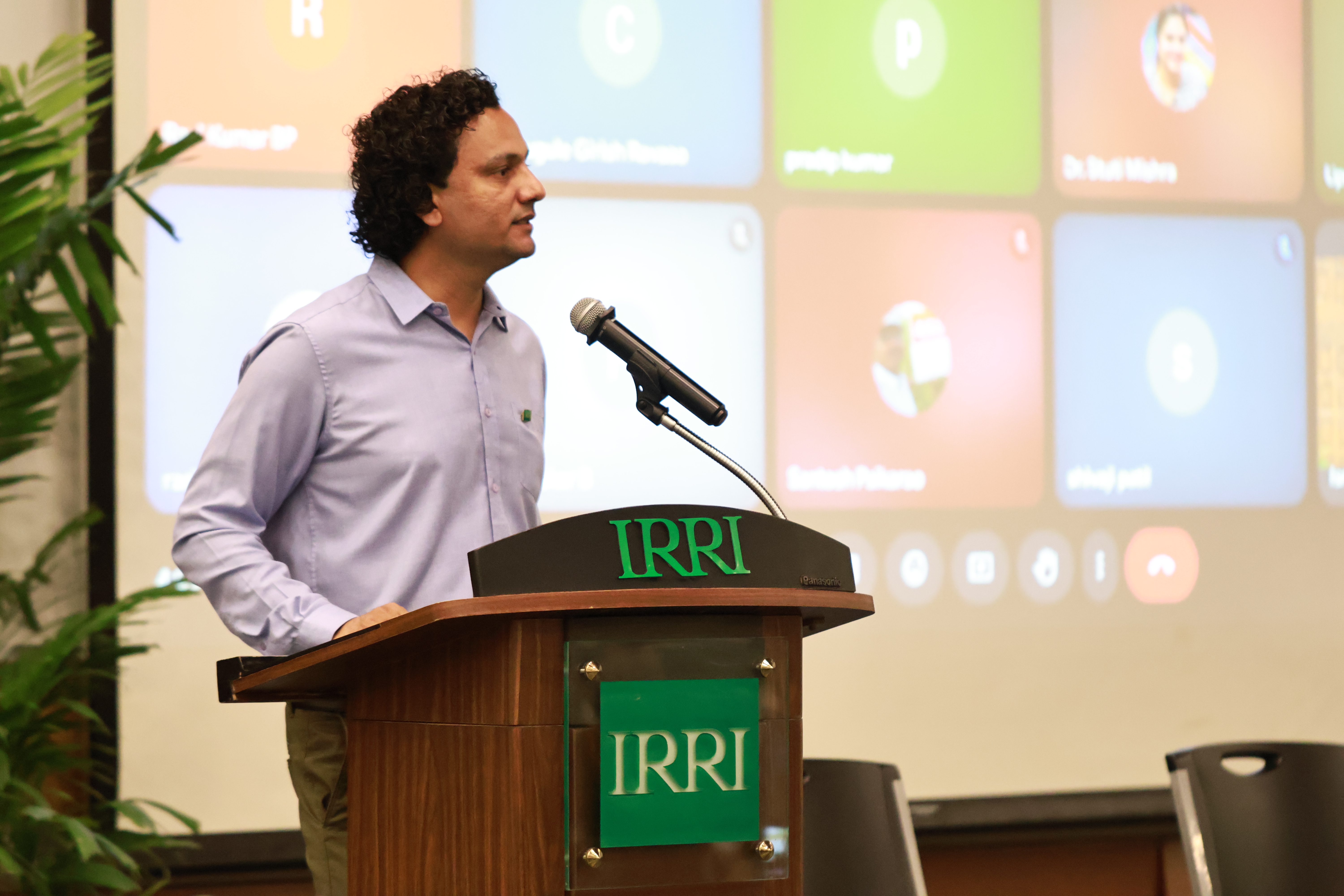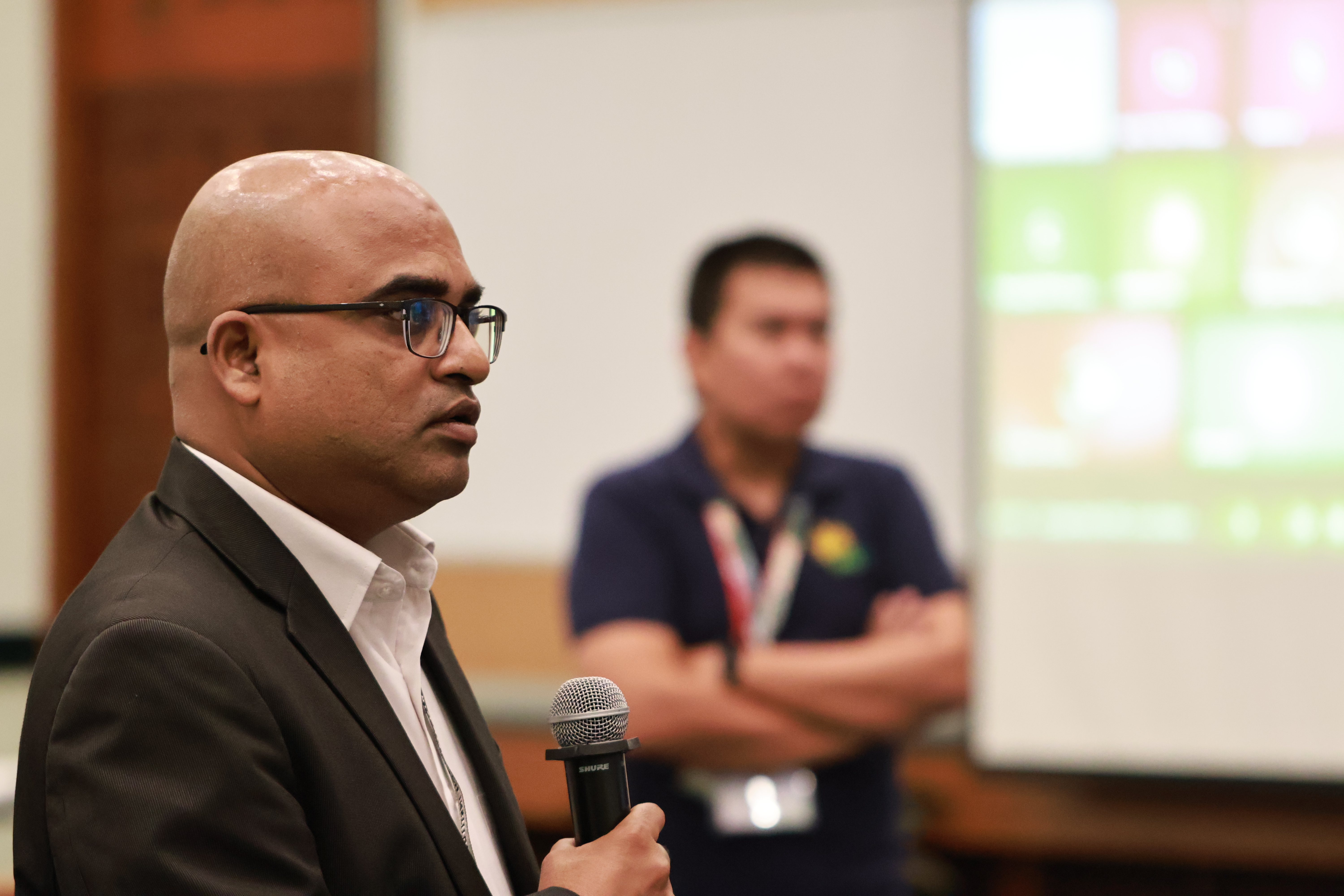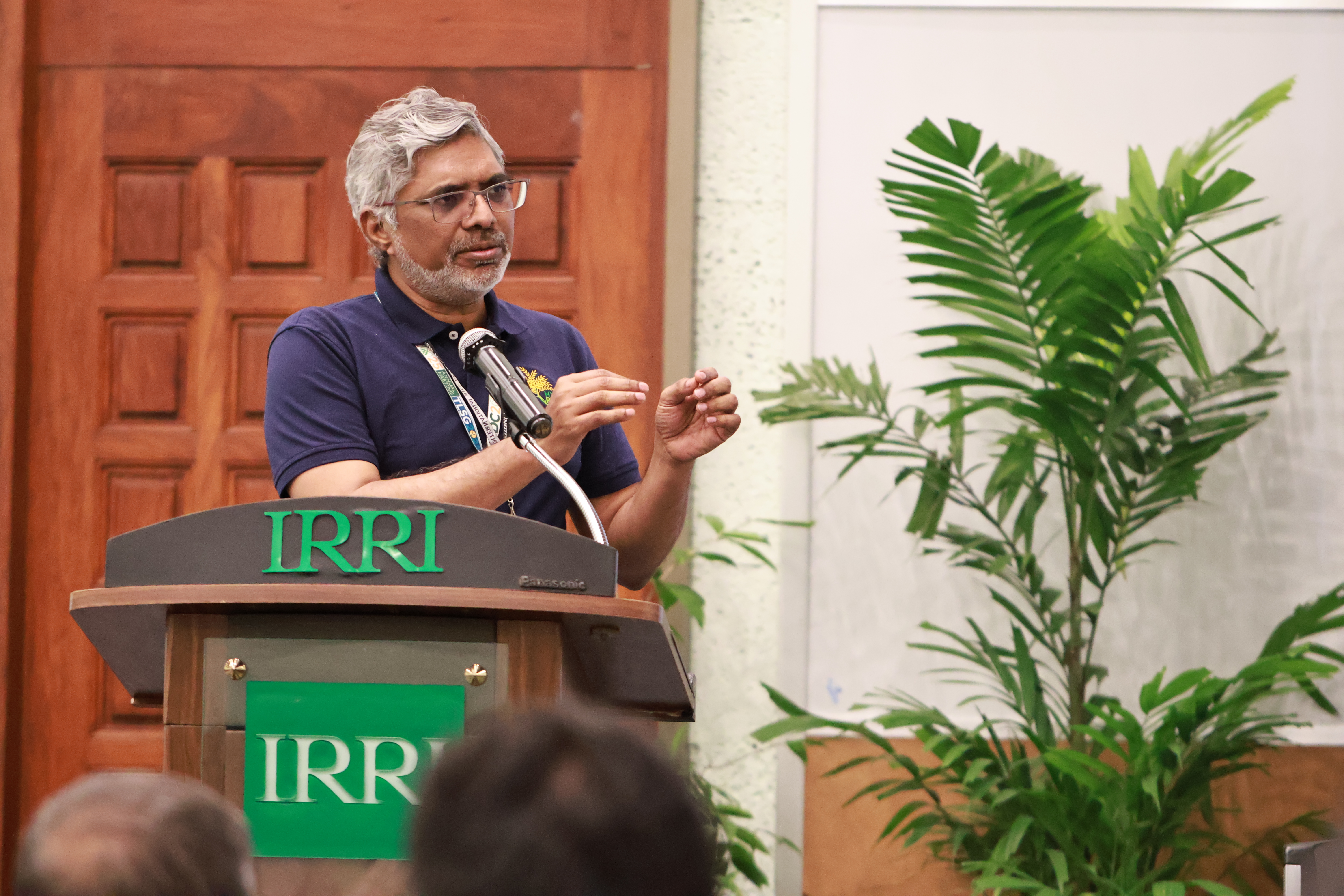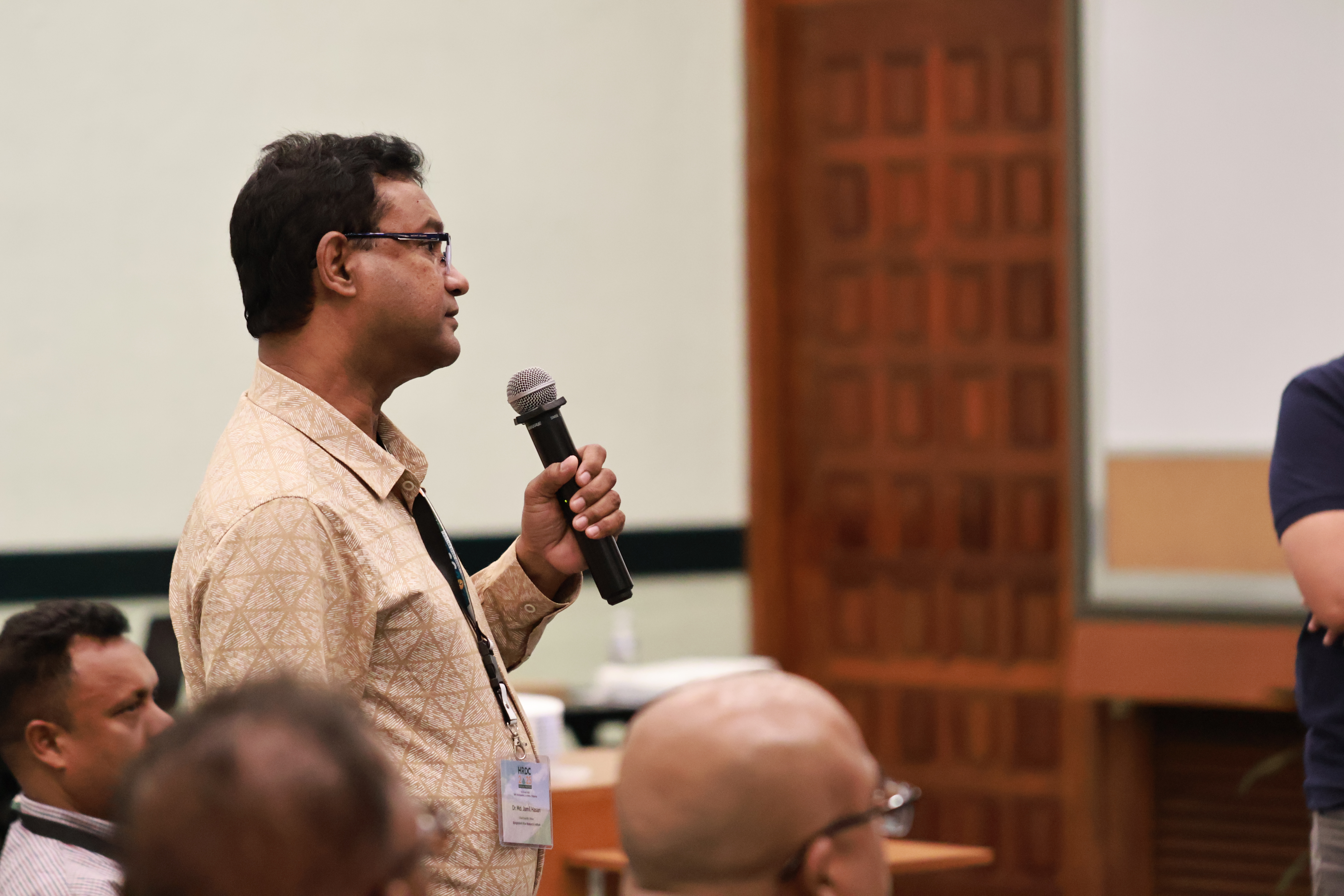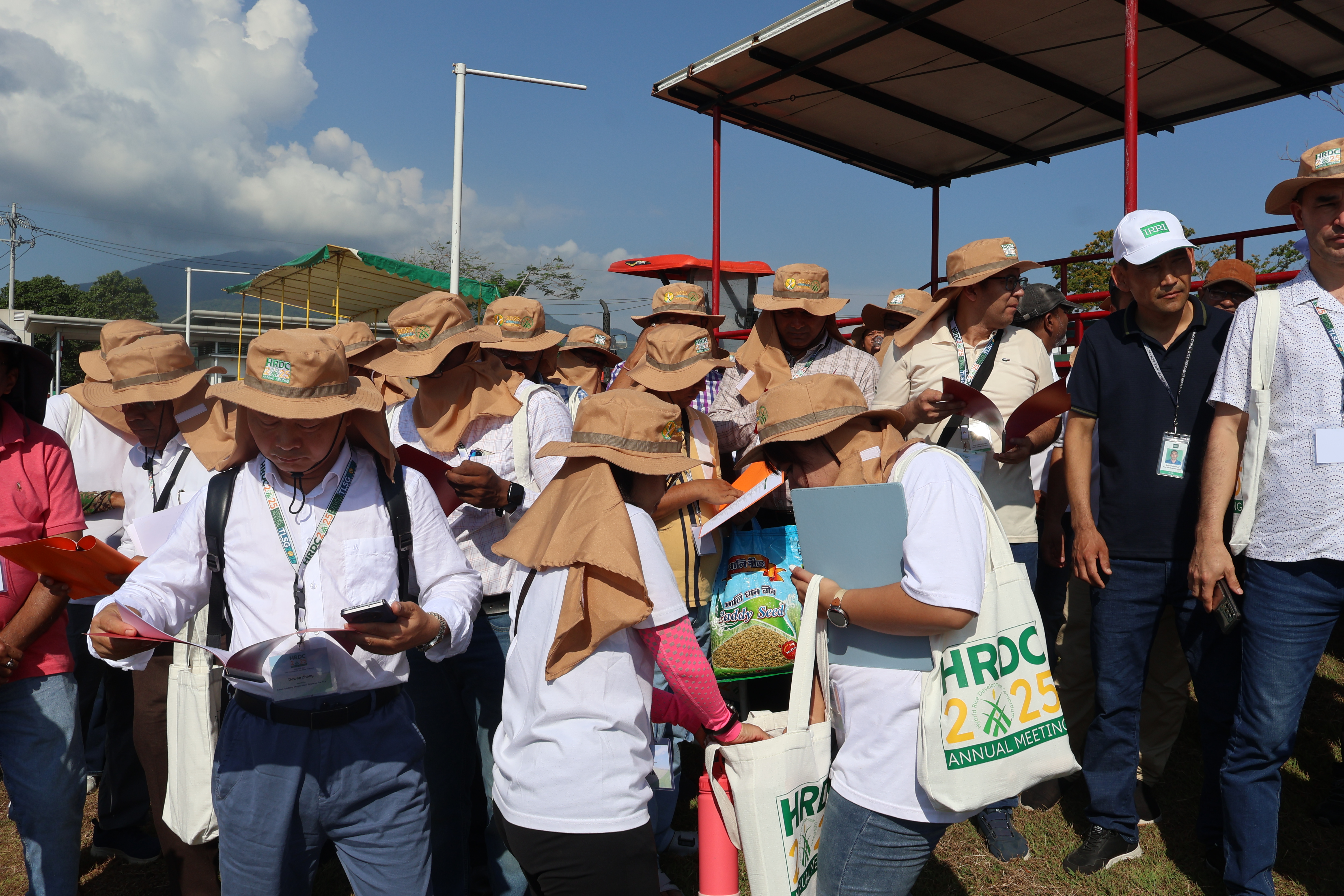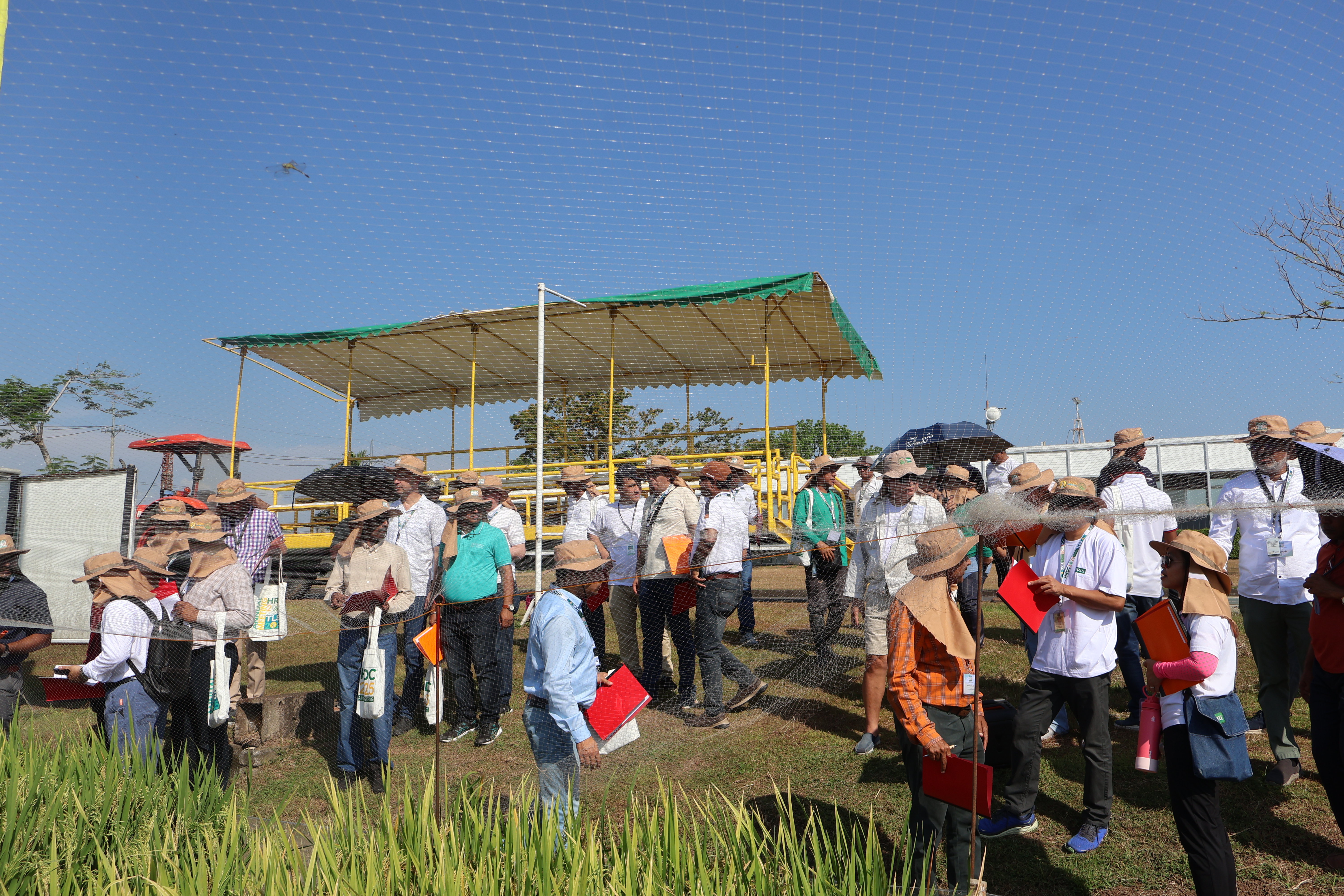Los Baños, Philippines — As climate change and rising food demand reshape agriculture, hybrid rice is emerging as a practical solution to boost productivity, improve resilience, and reduce resource use. To push these solutions forward, the Hybrid Rice Development Consortium (HRDC) recently held its Annual Meeting to share updates and plans for expanding hybrid rice technologies.
Dr. Yvonne Pinto, IRRI Director General, opened the event by announcing the launch of the Global Artificial Intelligence Hybrid Rice Platform. This cutting-edge tool simplifies the breeding process by identifying the best parent rice varieties, reducing the need for countless trial crosses. As a result, it saves both time and money, speeding up the development of rice varieties that are healthier and better adapted to changing climates.
Dr. Shalabh Dixit, IRRI Senior Principal Scientist, also shared insights on hybrid rice varieties designed for Direct-Seeded Rice (DSR) systems, such as Mestiso 89 and NSIC Rc 690—the world’s first low-methane hybrid. These varieties have unique traits like quick canopy closure, deep roots, and the ability to grow in aerobic conditions. Such features help control weeds, reduce methane emissions, and sustain high yields even with less water and labor.
Discussions at the meeting further reinforced that hybrid rice continues to outperform traditional inbred varieties. New hybrid rice varieties deliver up to 25% higher yield, and are also more tolerant to drought, salinity, and flooding. Field trials in Asia and Africa showed HRDC hybrids performing 10–30% better than commercial varieties, all while using less water and fertilizer. In Vietnam, trials using mechanized DSR systems with HRDC hybrids led to higher yields, lower costs, and stronger resistance to lodging.
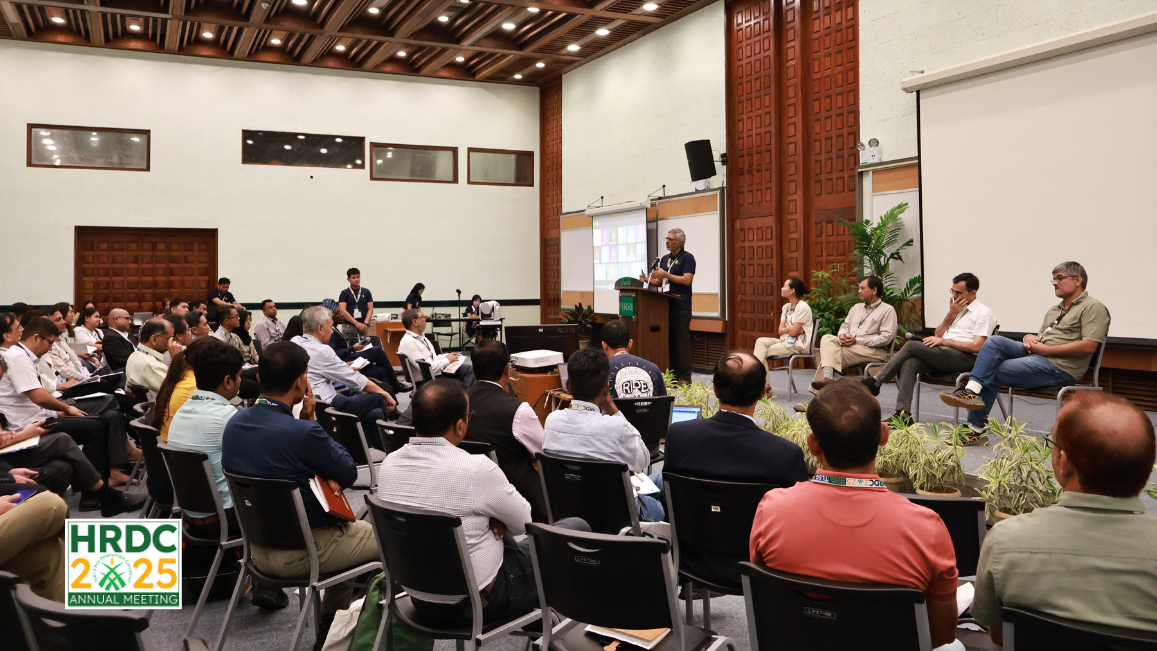
Photo caption: Dr. Ali, head of the consortium, shares advances in hybrid rice technologies, including field performances of HRDC rice varieties.
Building on these successes, Dr. Jauhar Ali, IRRI Principal Scientist and Head of HRDC, emphasized the role of collaborative networks like One NARES in scaling hybrid rice technologies. “The network connects public and private sector institutions and has facilitated the distribution of 29 hybrids, expanding the impact of these innovations,” he said.
“IRRI has exceeded yields of 12.8 tons per hectare in trials, showcasing the significant potential of these hybrids,” he added.
These achievements are supported by advanced breeding techniques, including genomic selection, which helps identify the best parent plants for creating robust hybrid varieties. Both two-line and three-line hybrids are being developed to suit different growing conditions and markets.
The HRDC now includes over 89 member organizations worldwide. New partners, including those from Pakistan, are contributing germplasm and field data to strengthen the global pipeline. Moreover, training programs, including the upcoming course on hybrid rice breeding, are underway to improve capacities of breeding partners.
The HRDC’s inclusive approach has led to faster seed development, grain types that meet market demands, and improved genetic progress. Through its focus on elite breeding, genomic selection, and knowledge sharing, HRDC is supporting researchers and farmers in advancing climate-smart, farmer-focused rice production.
